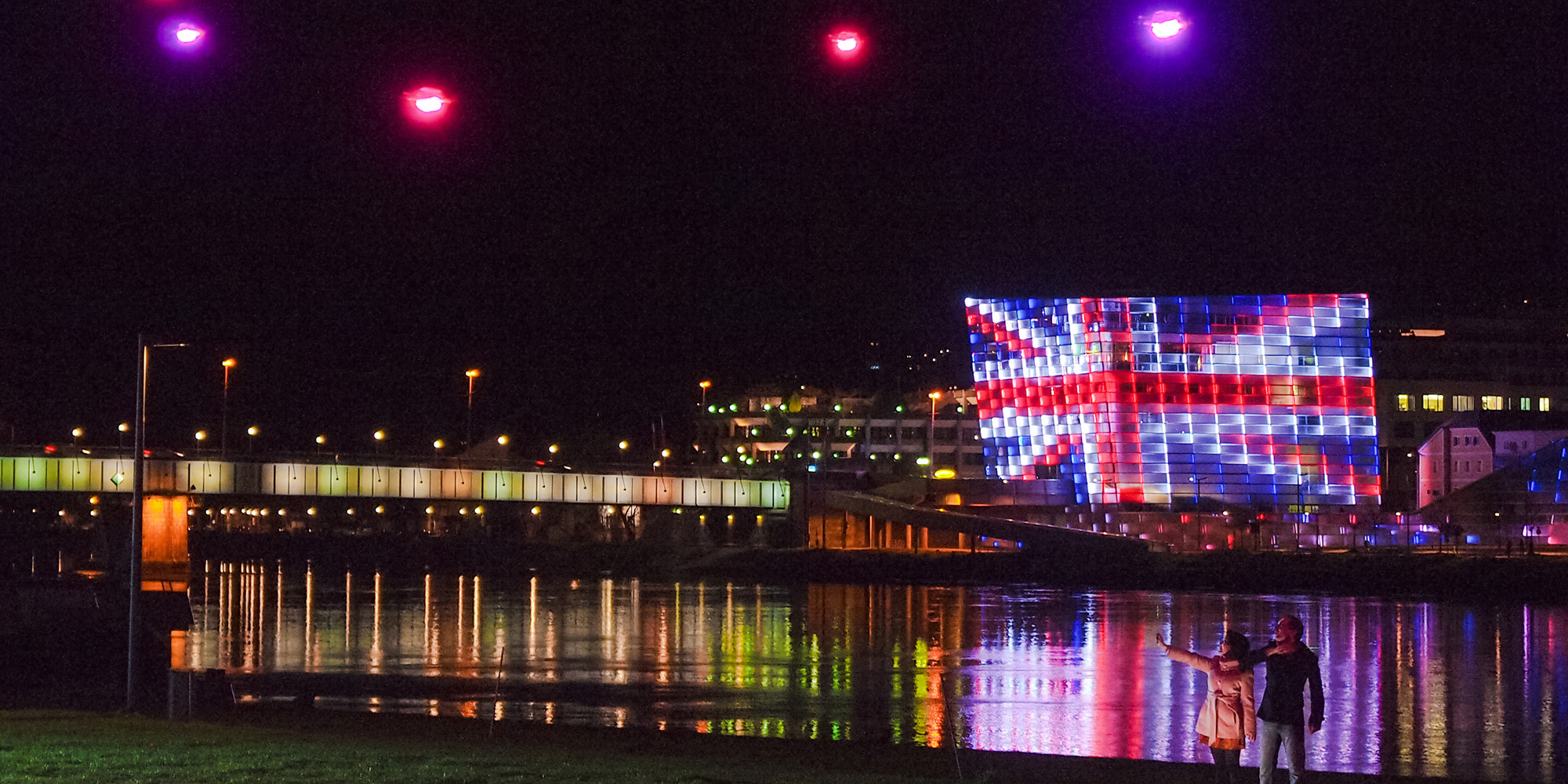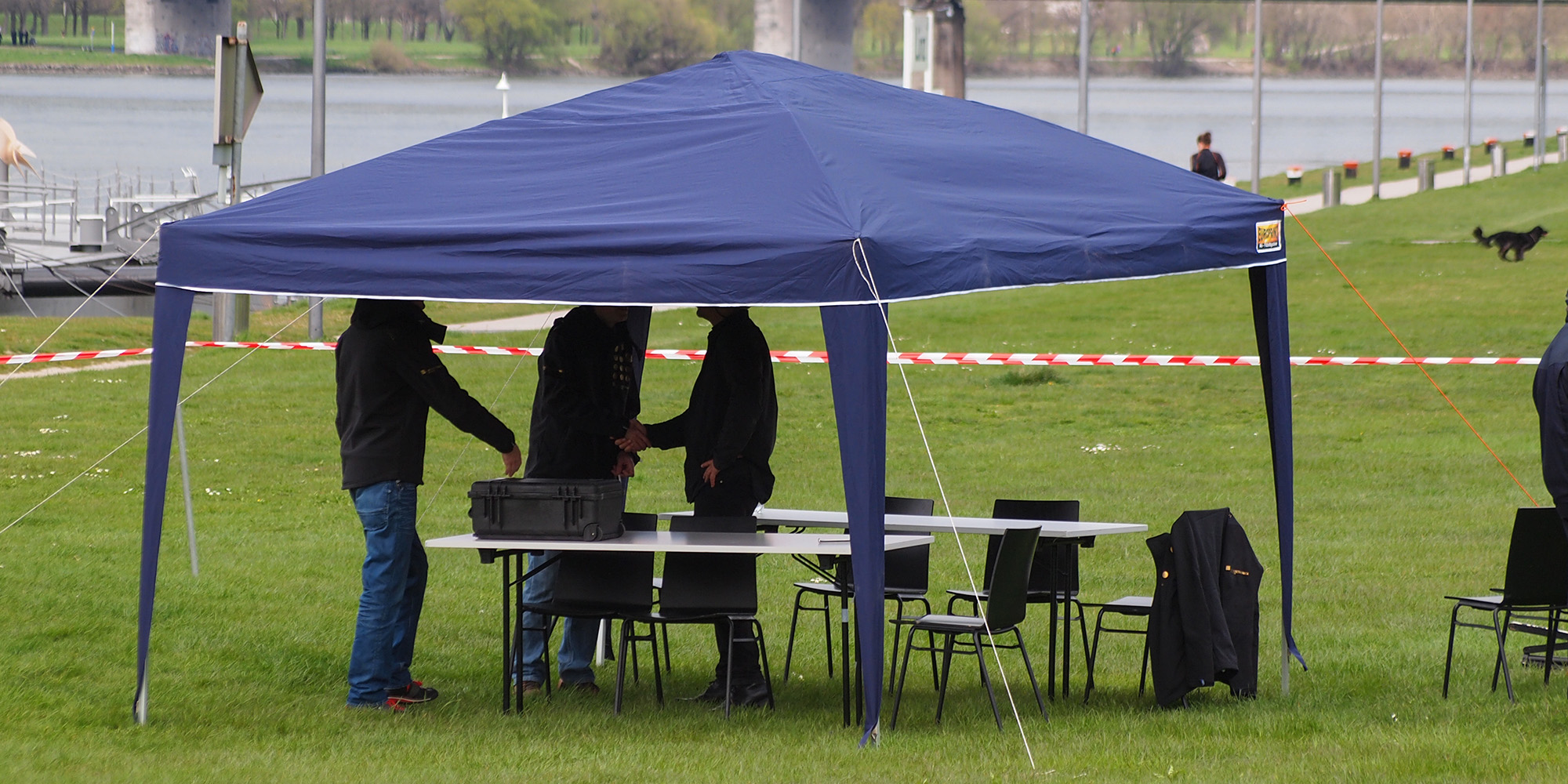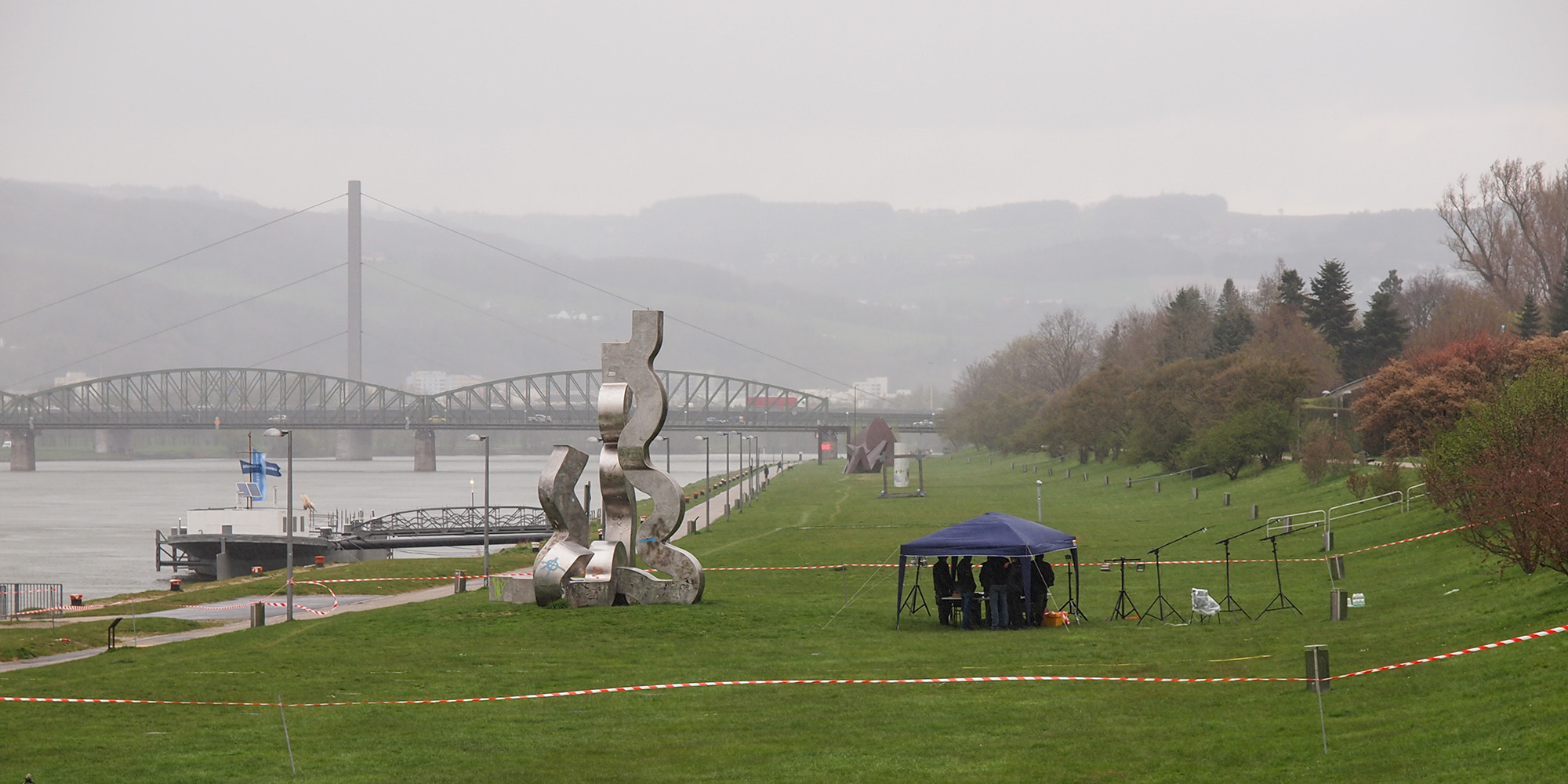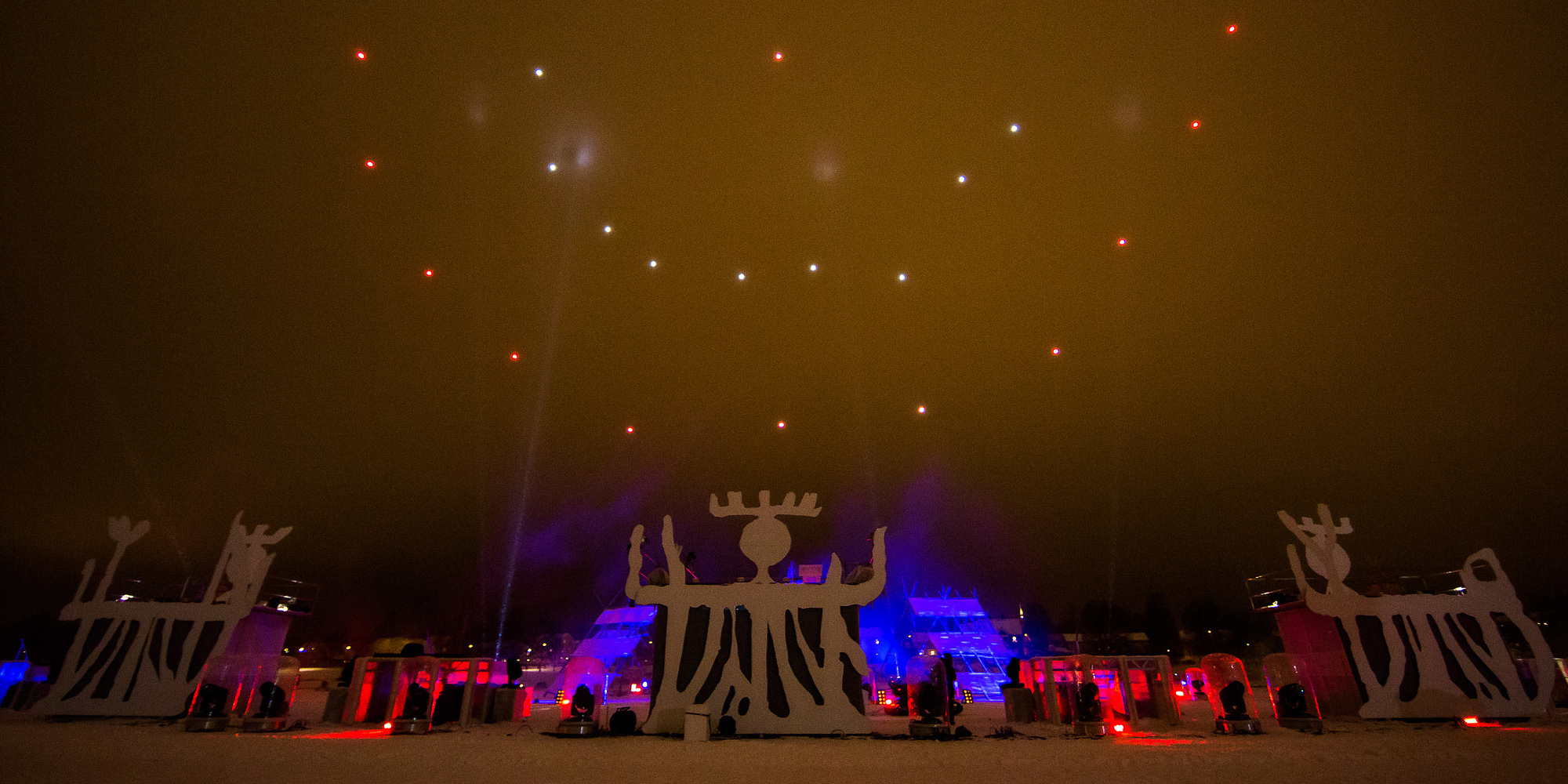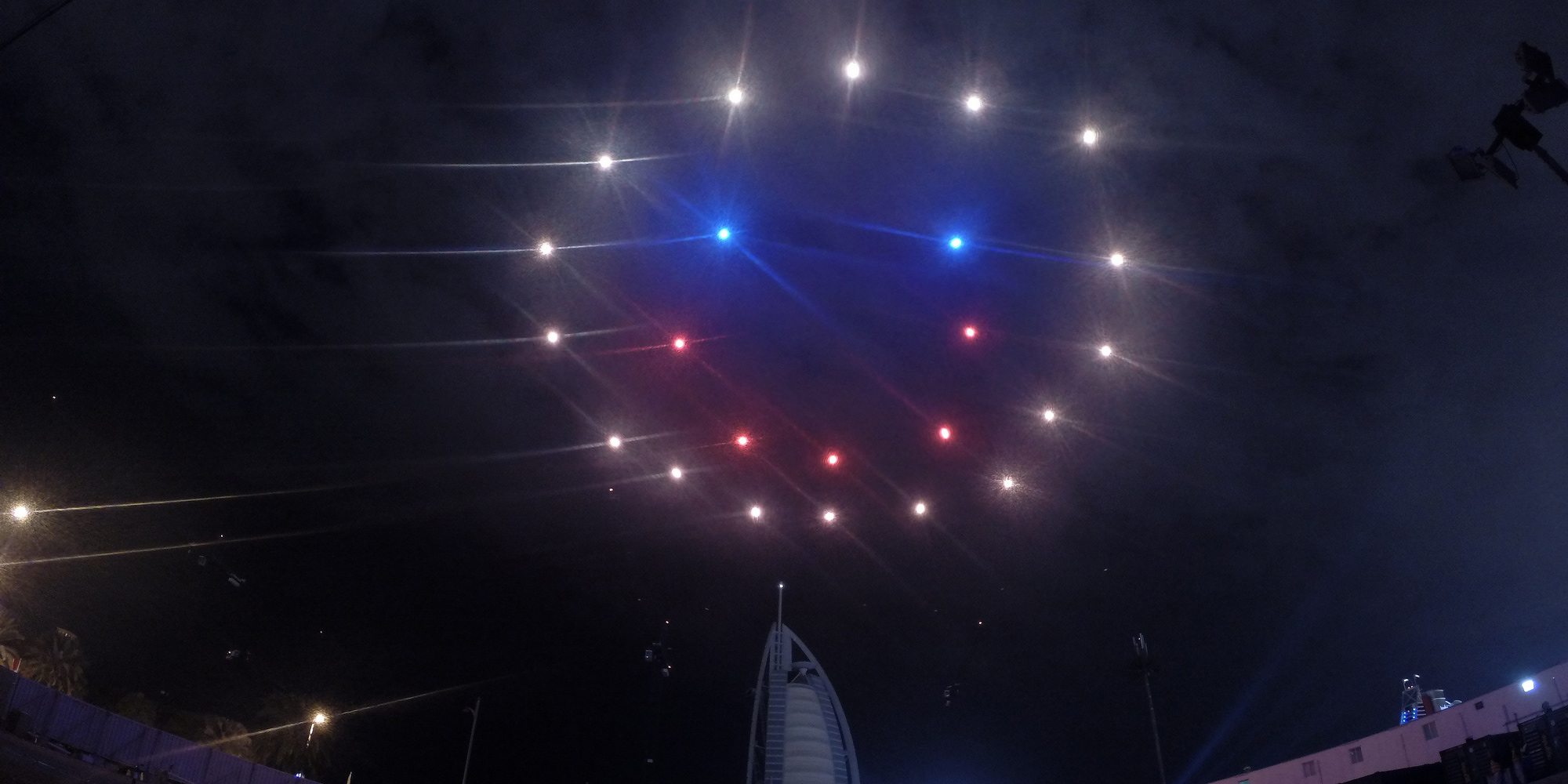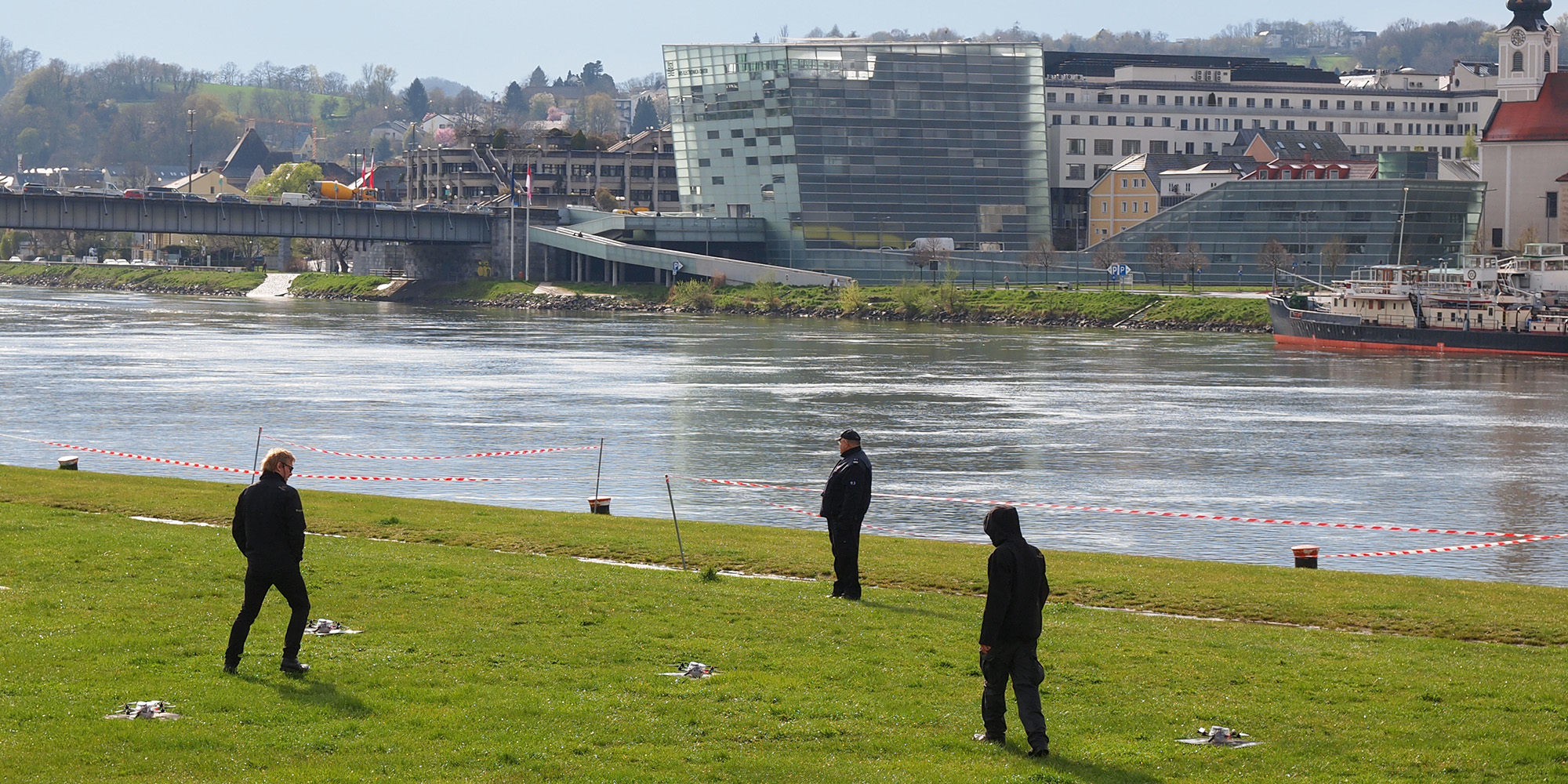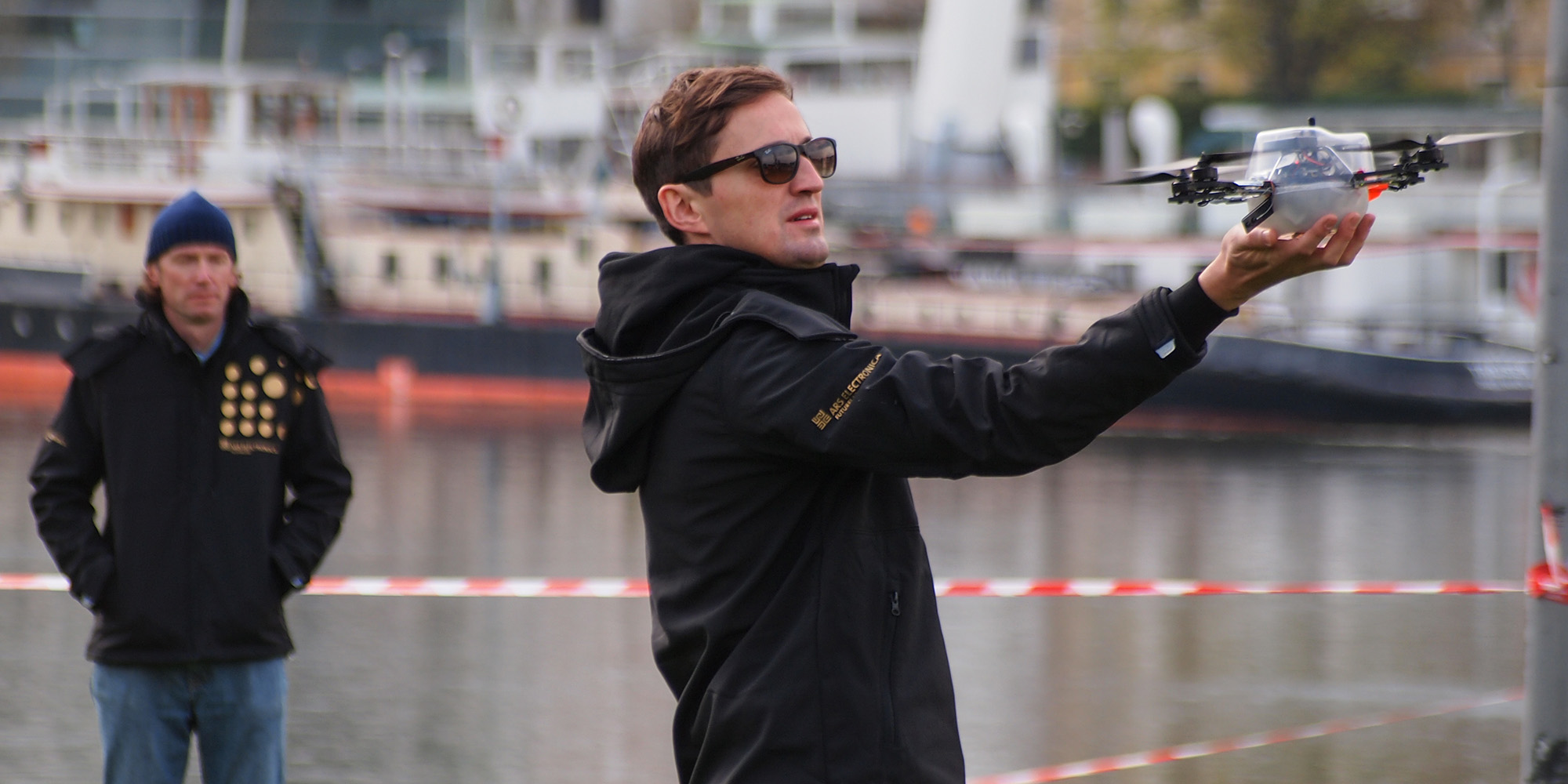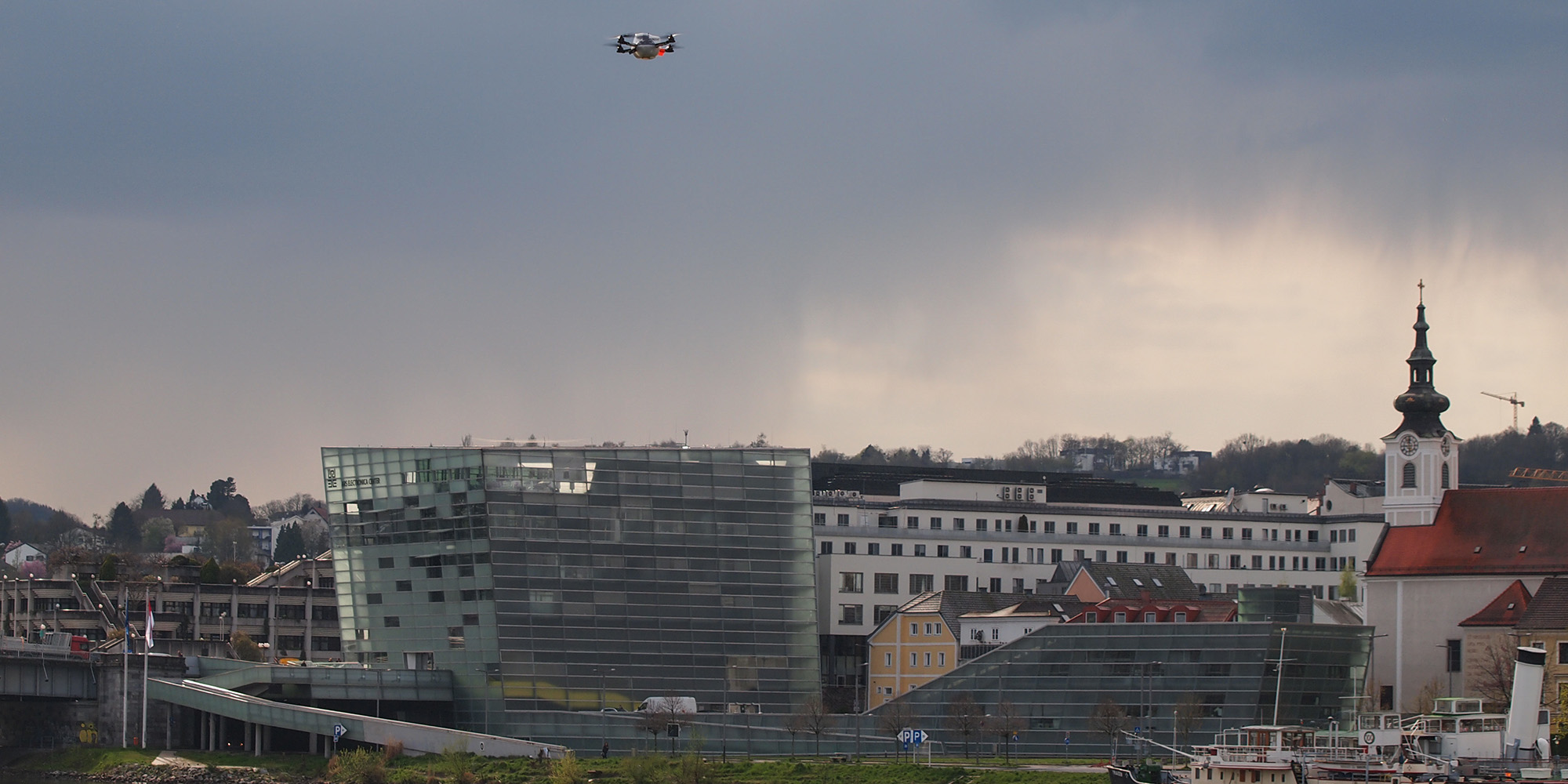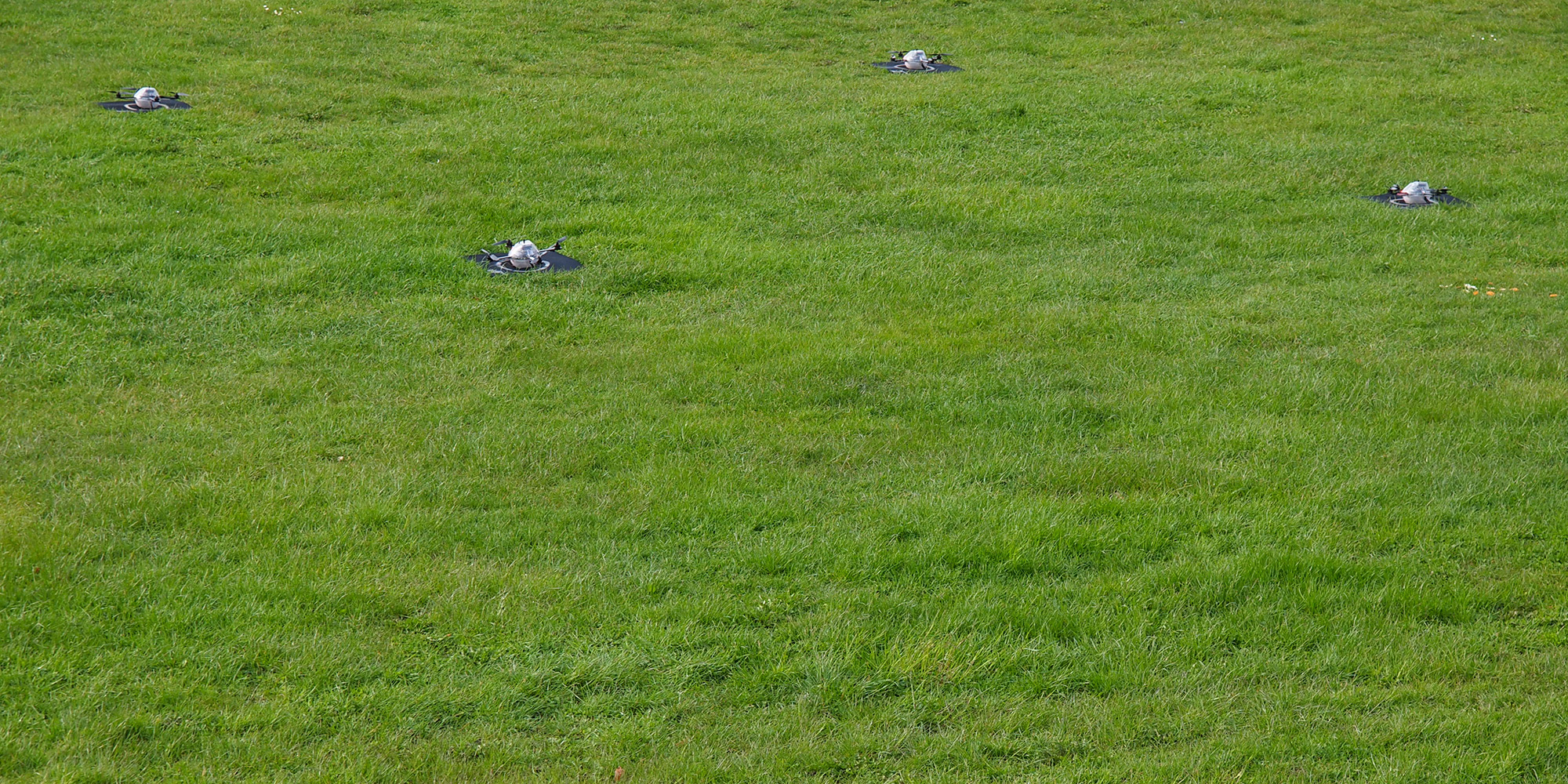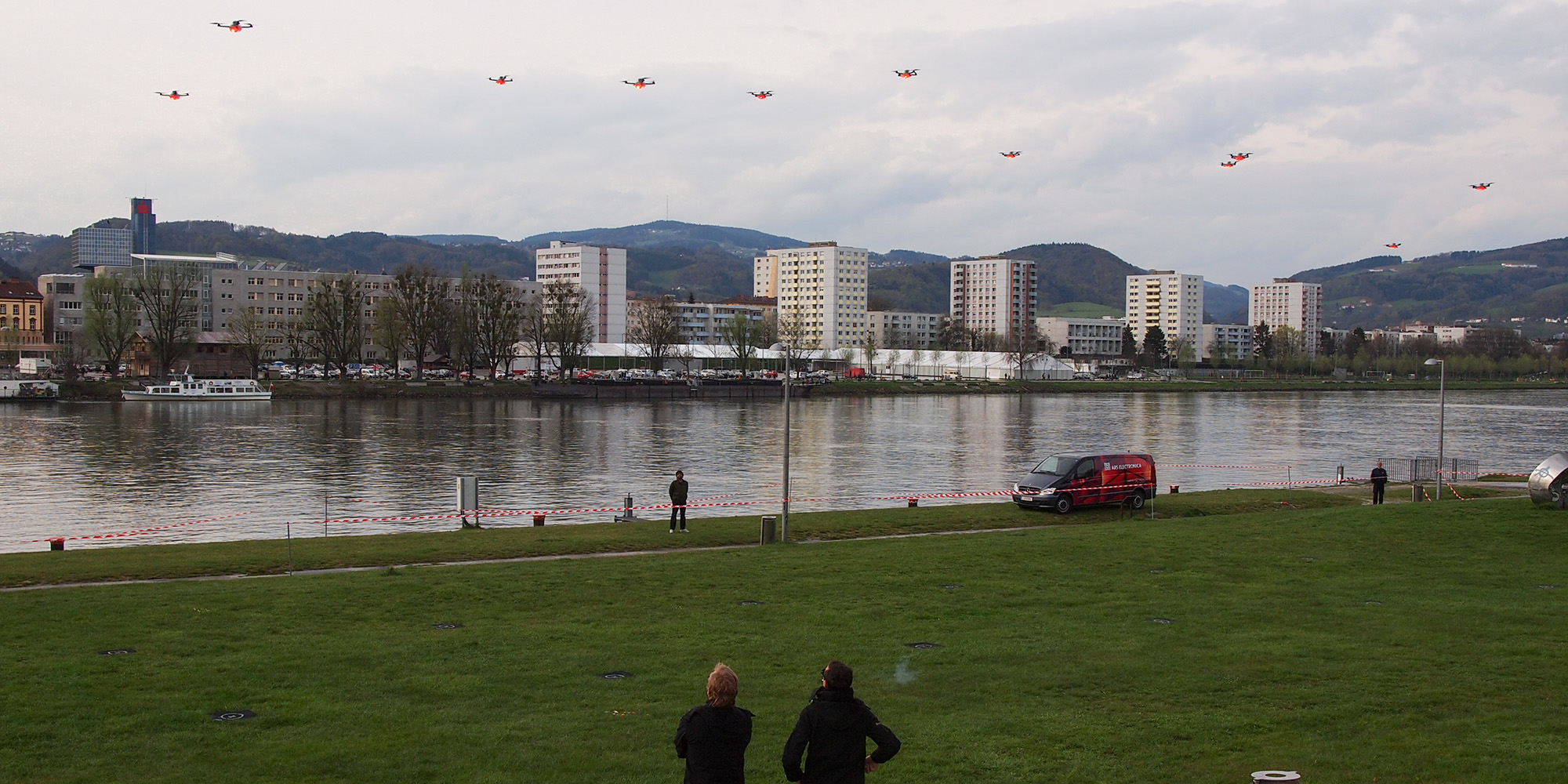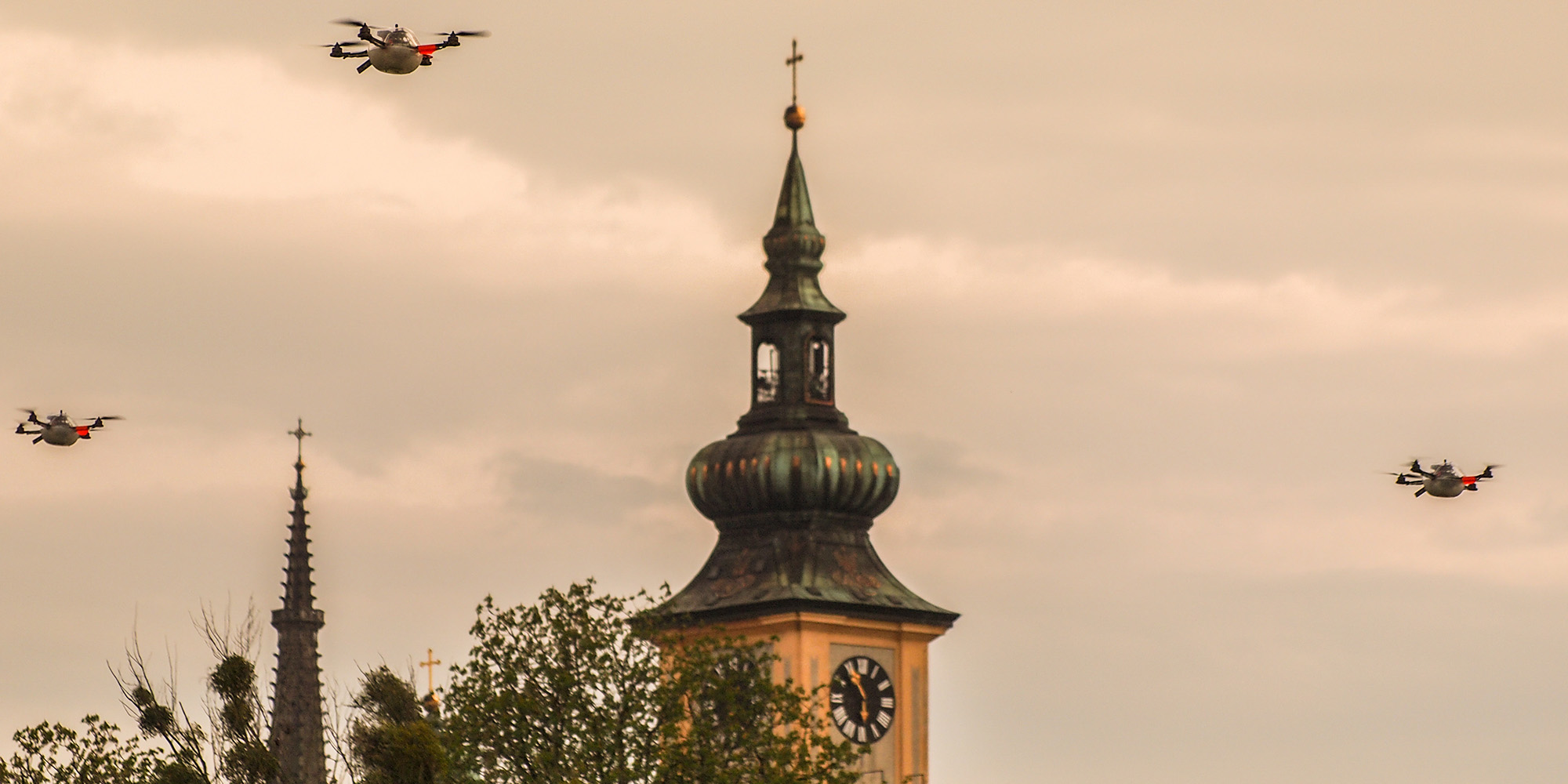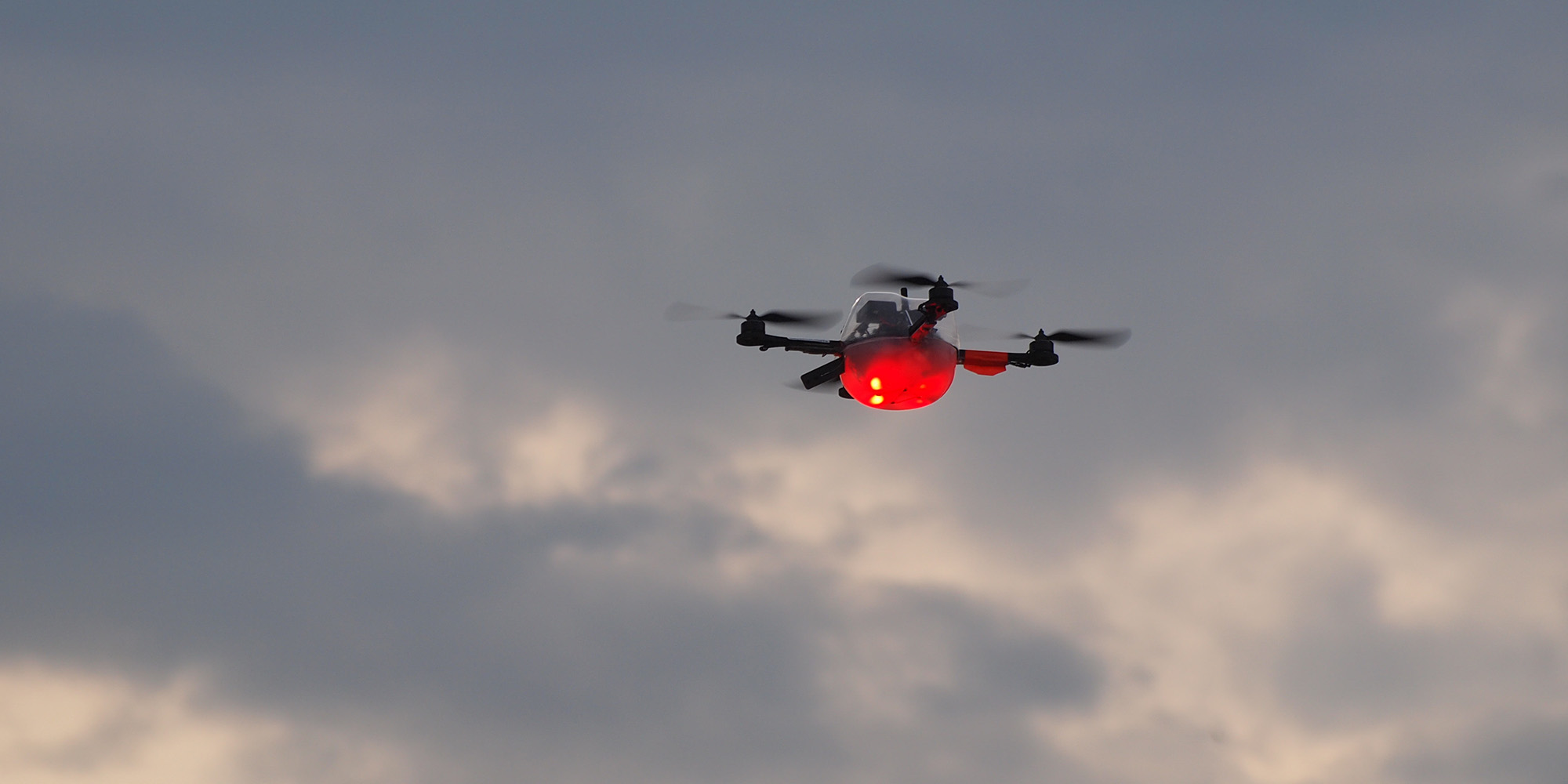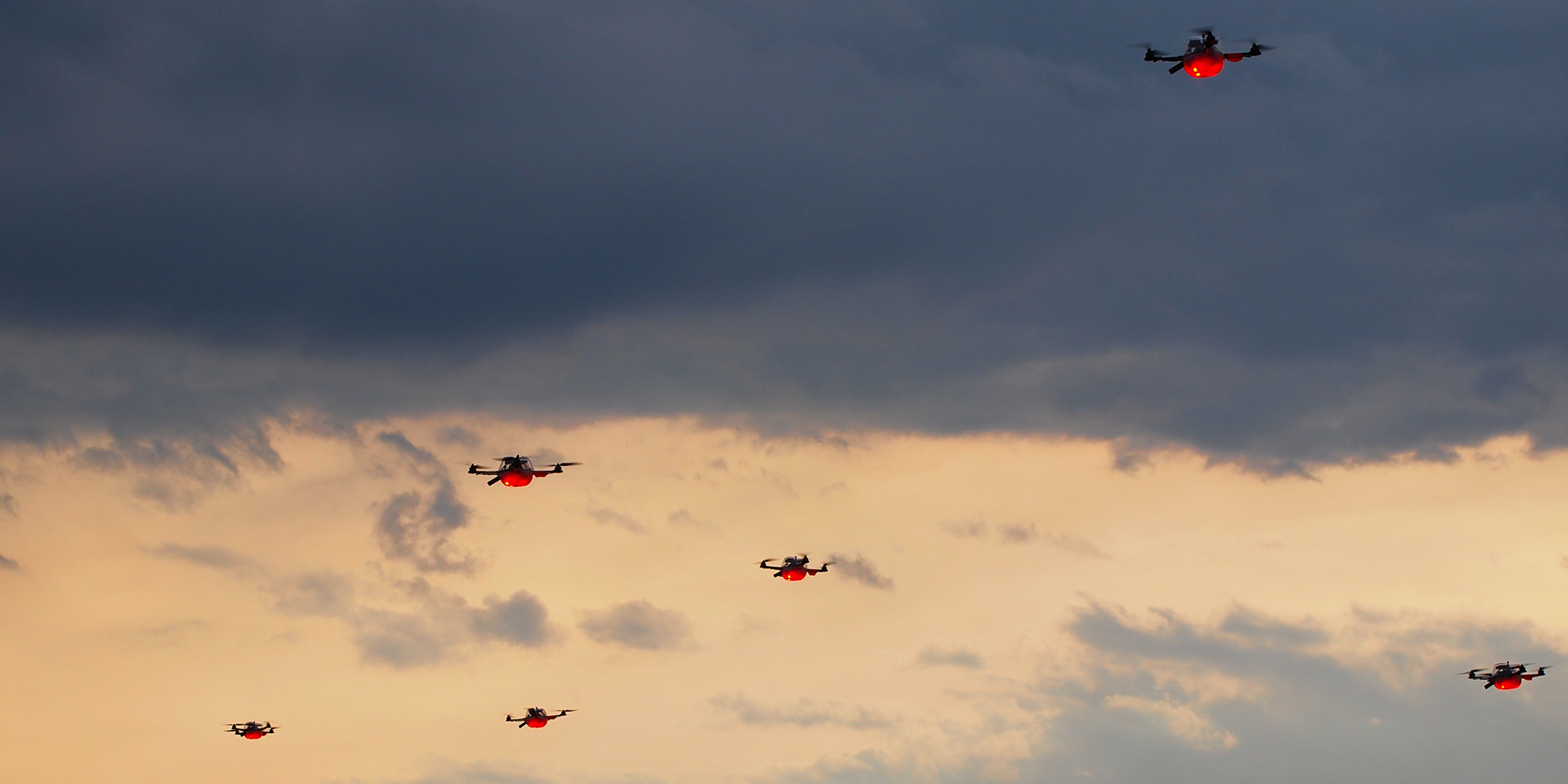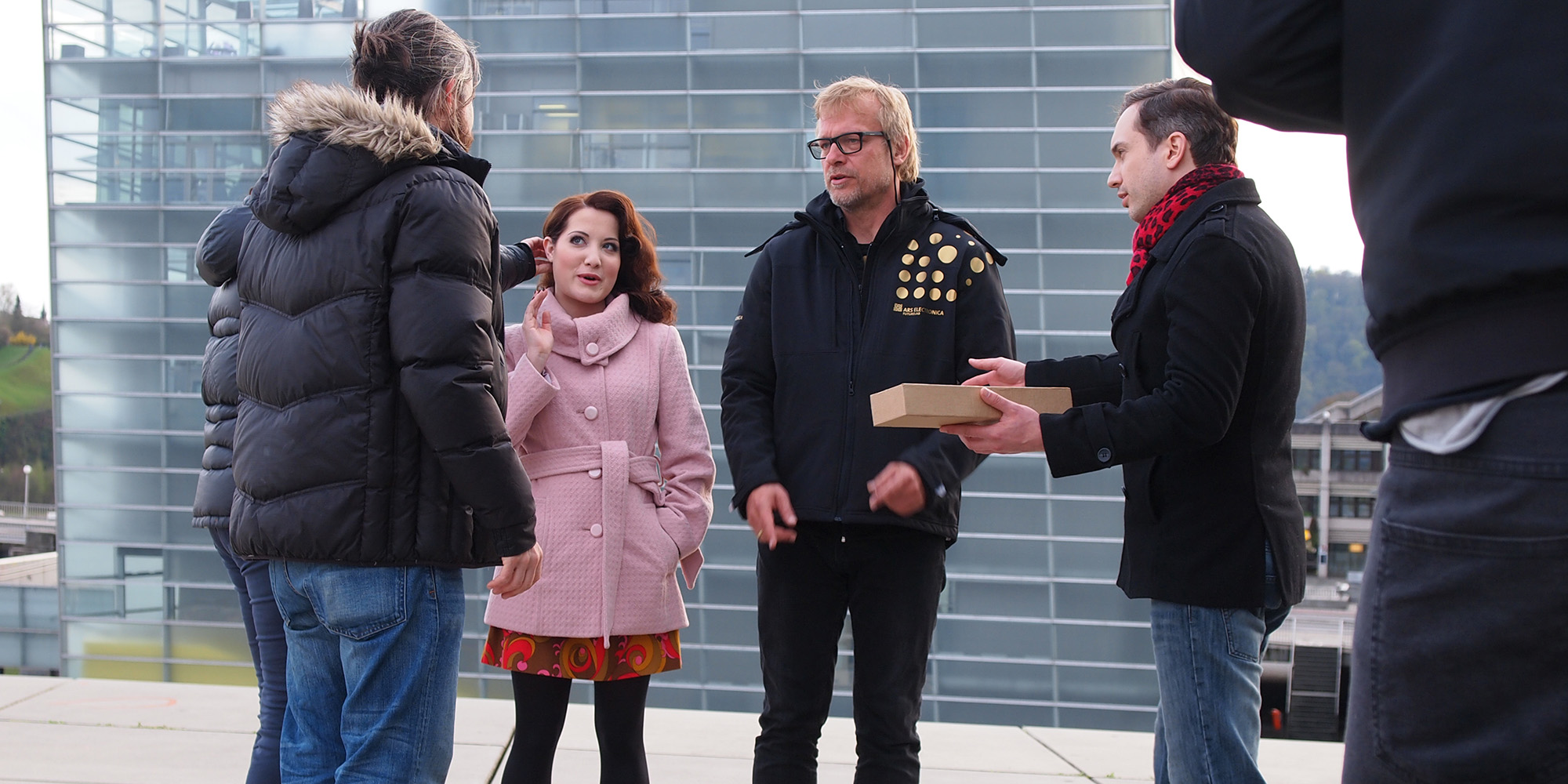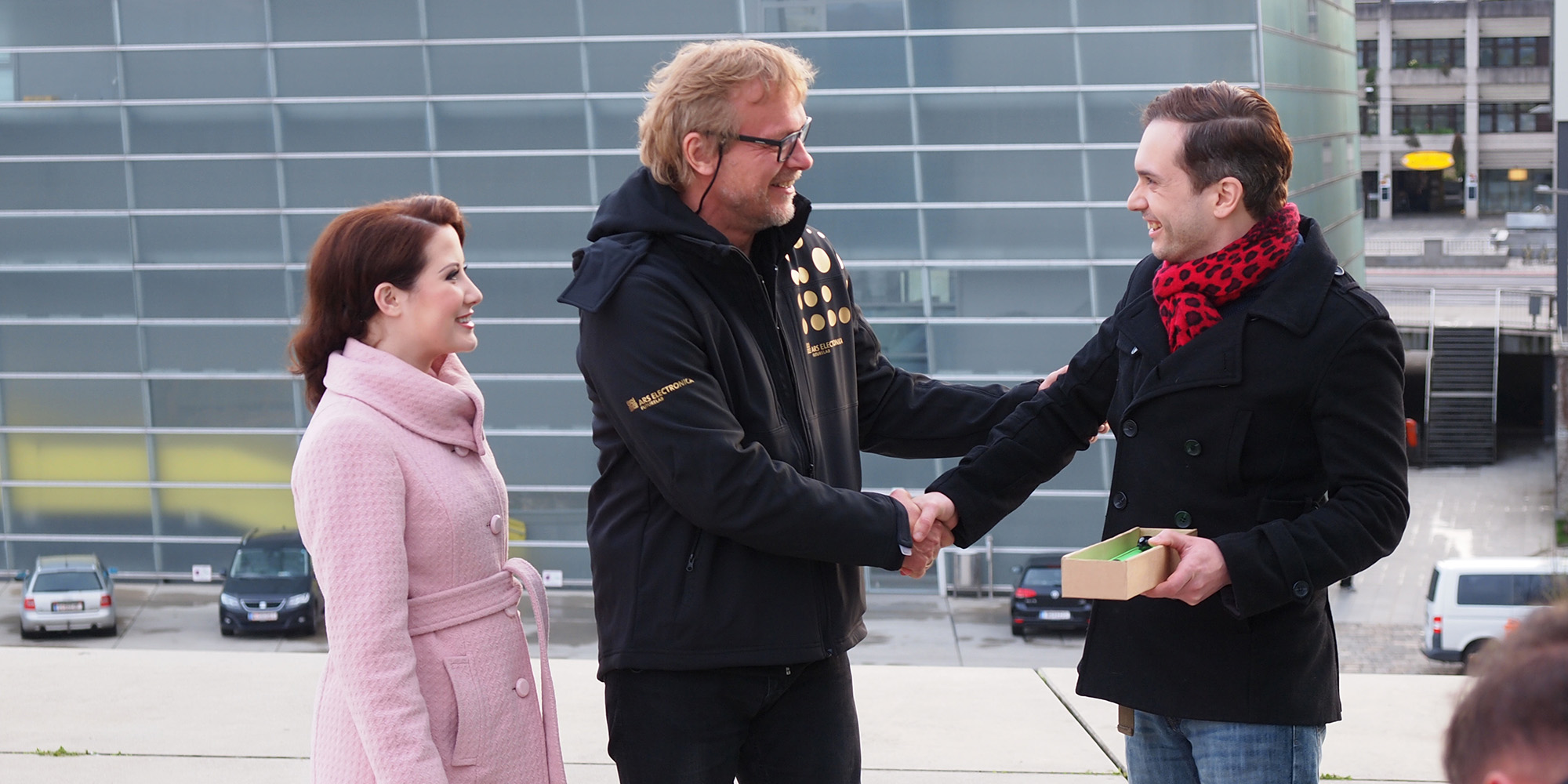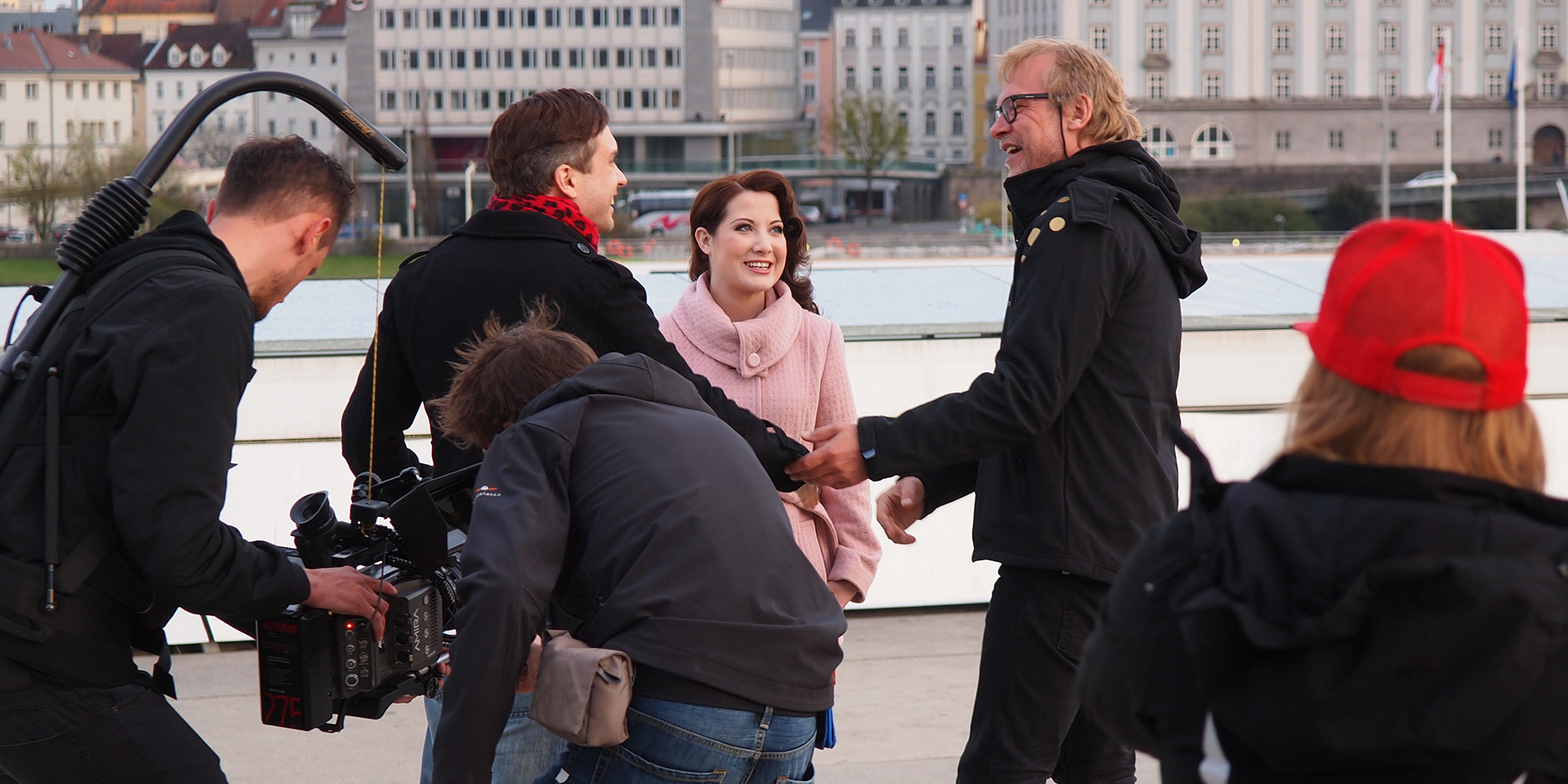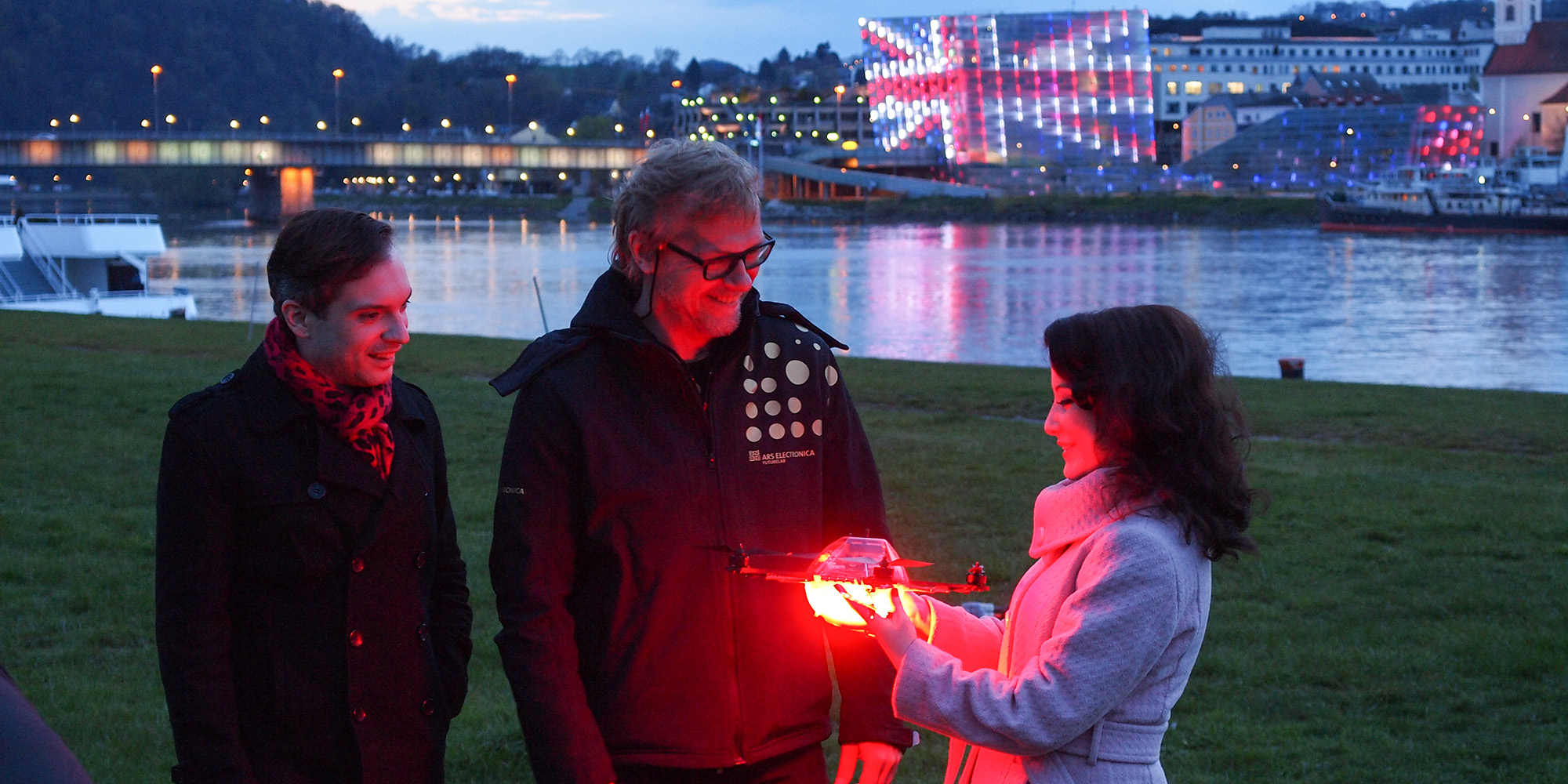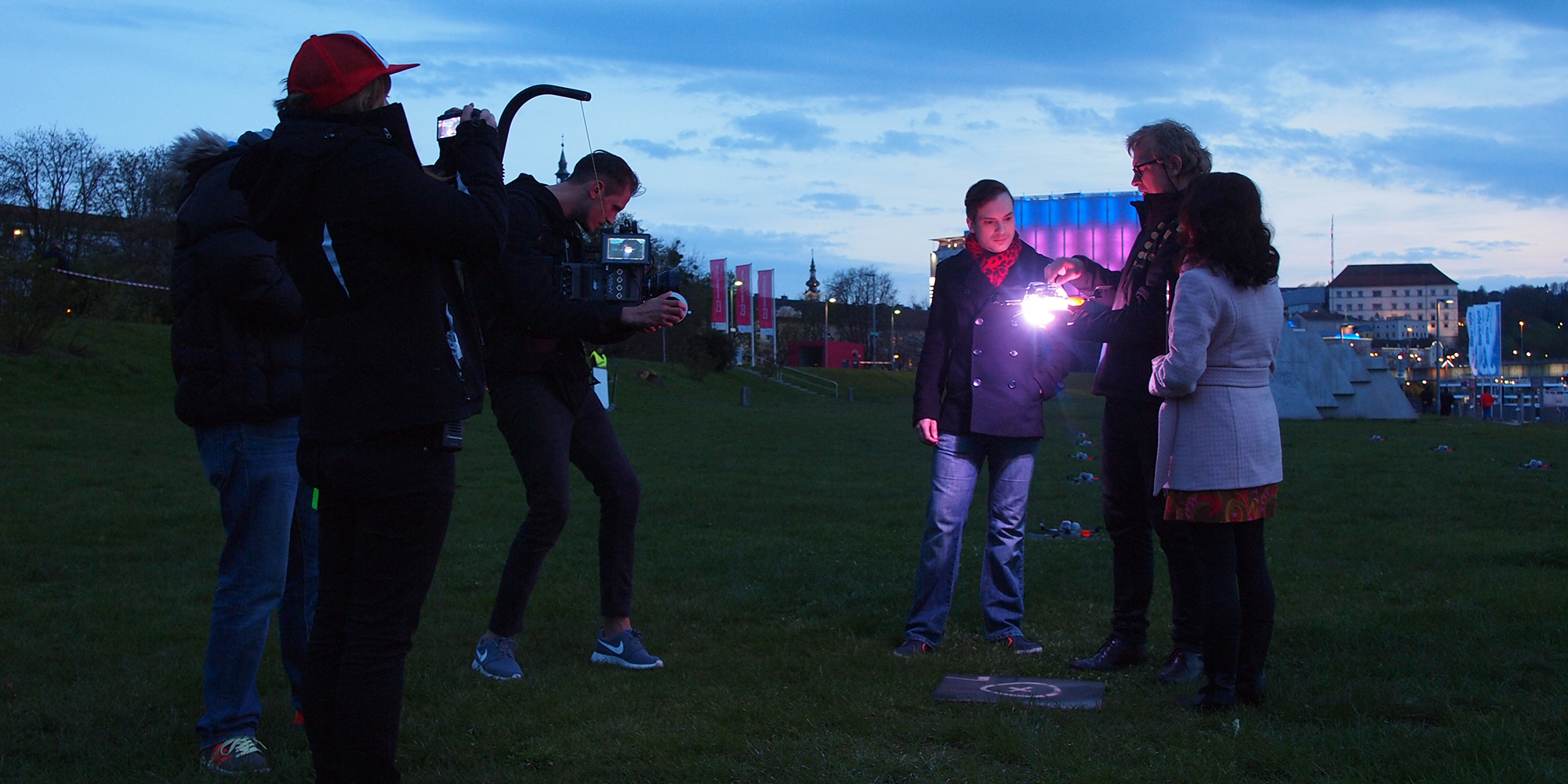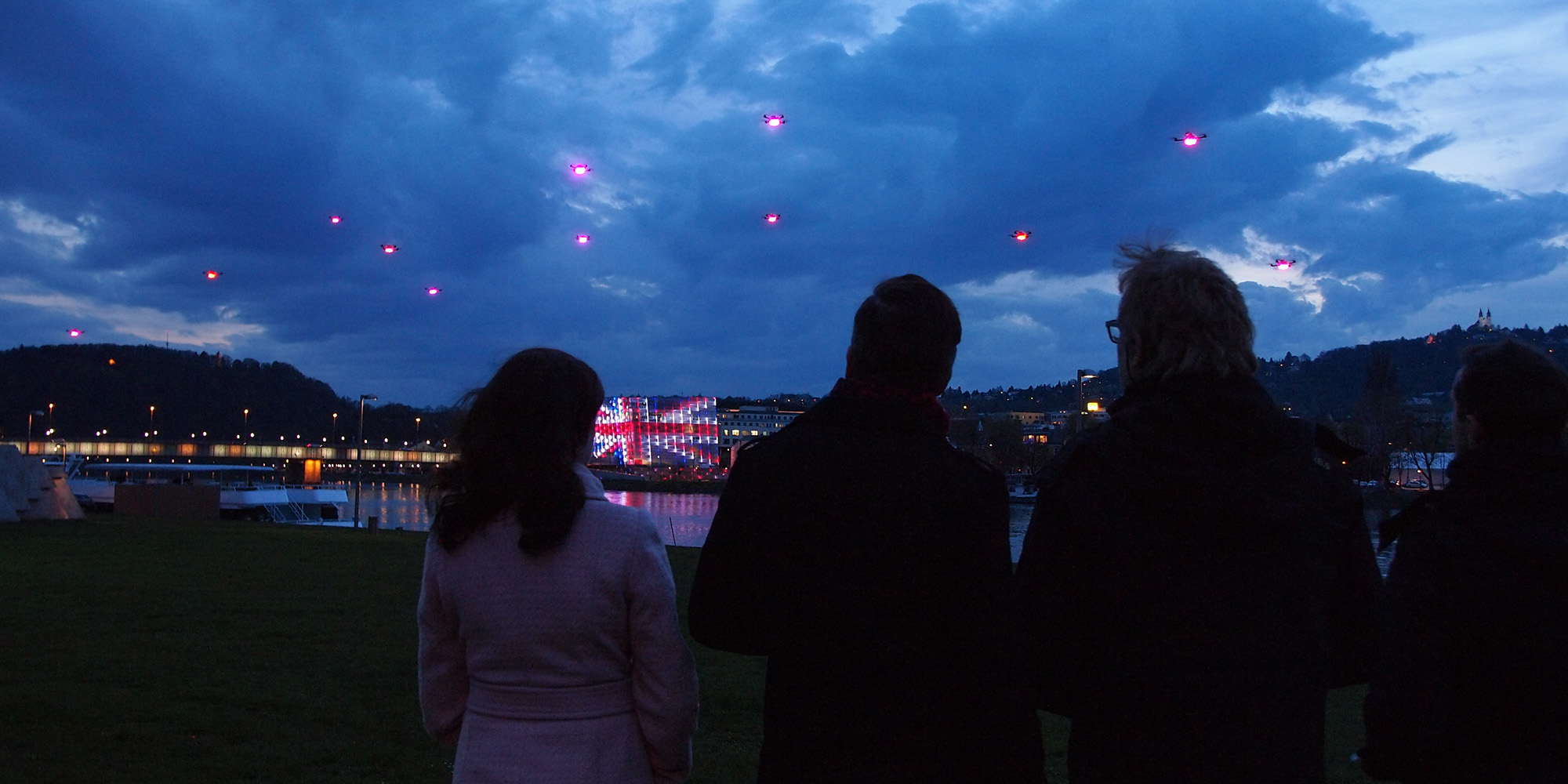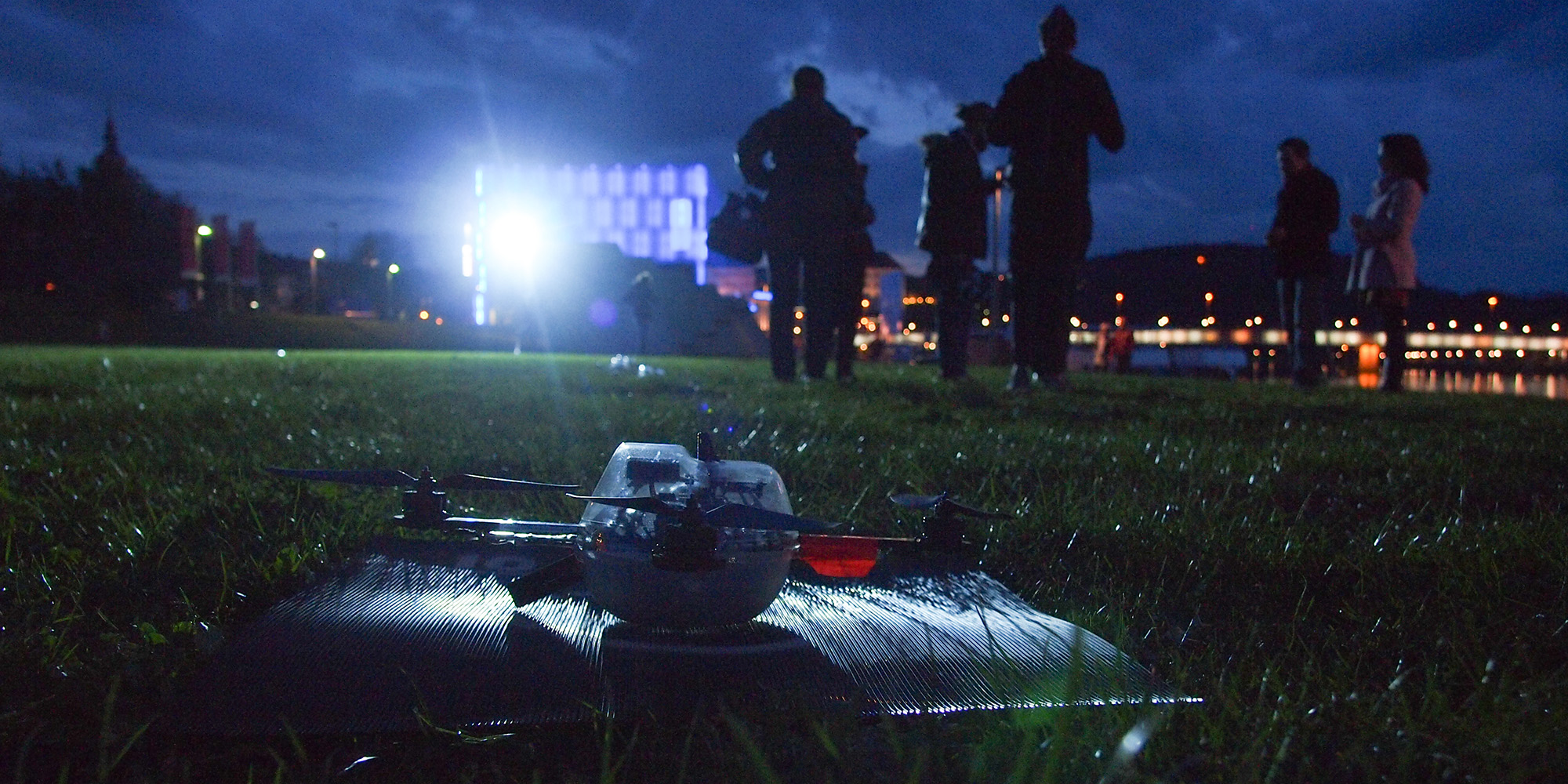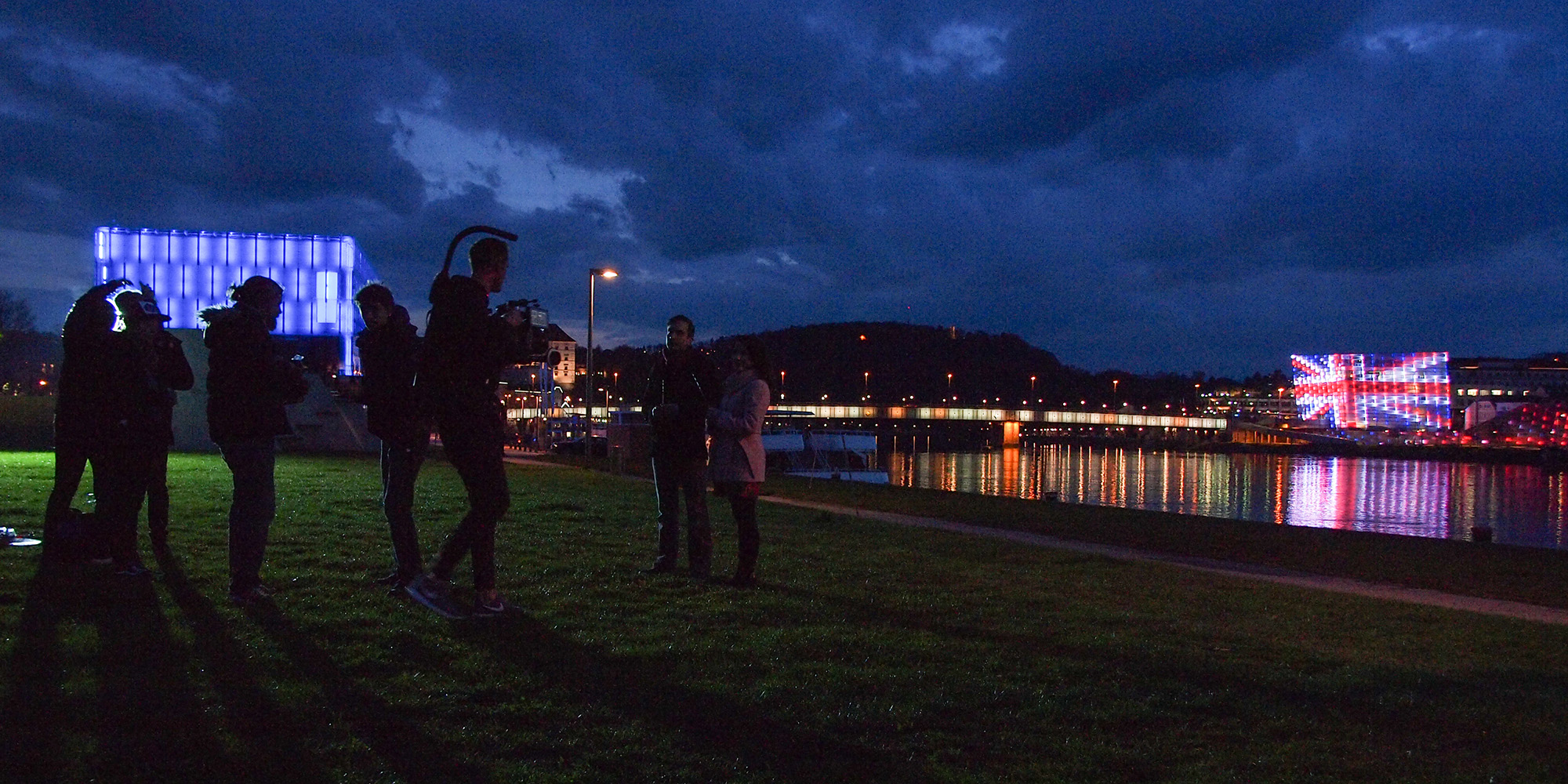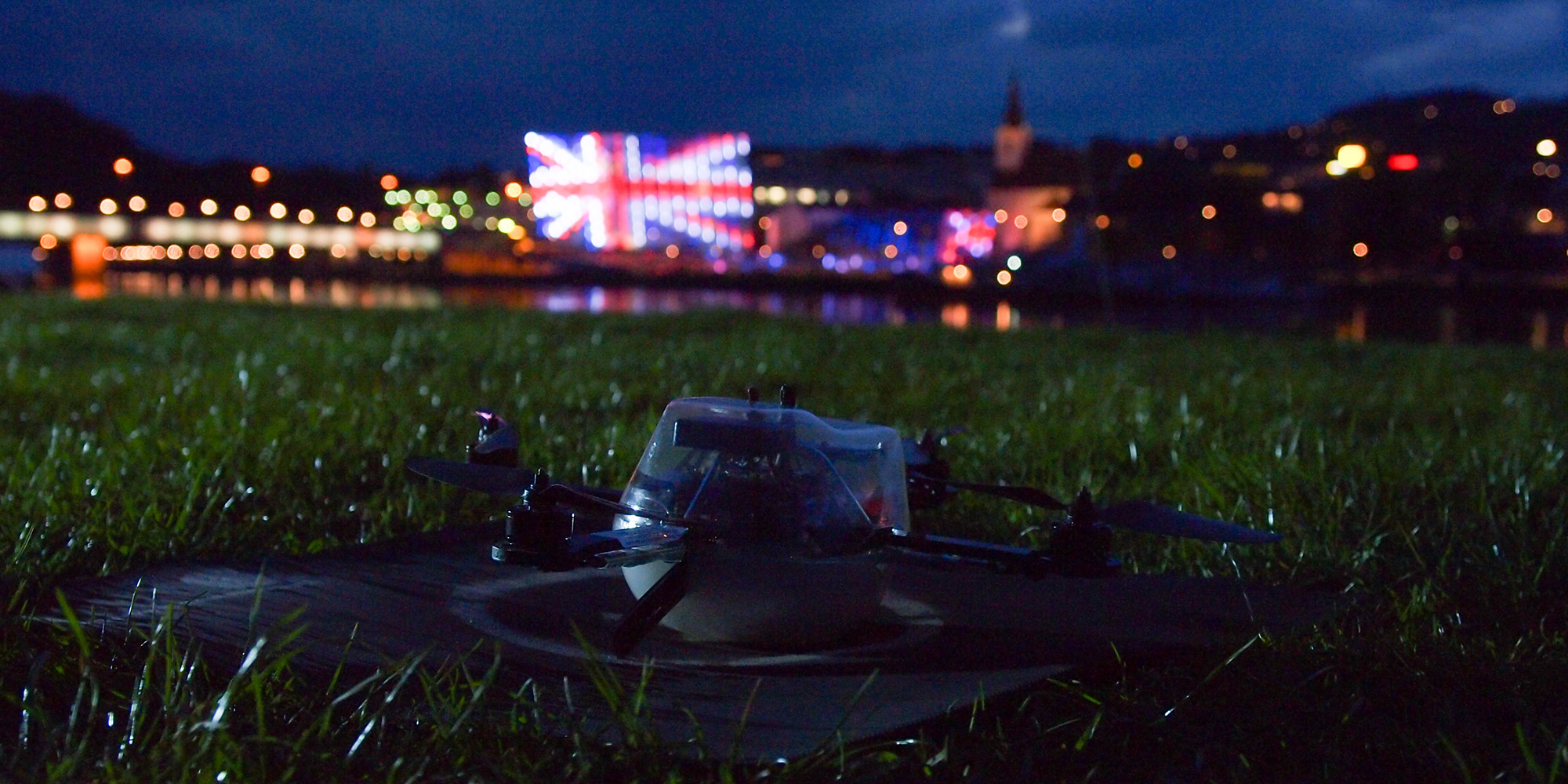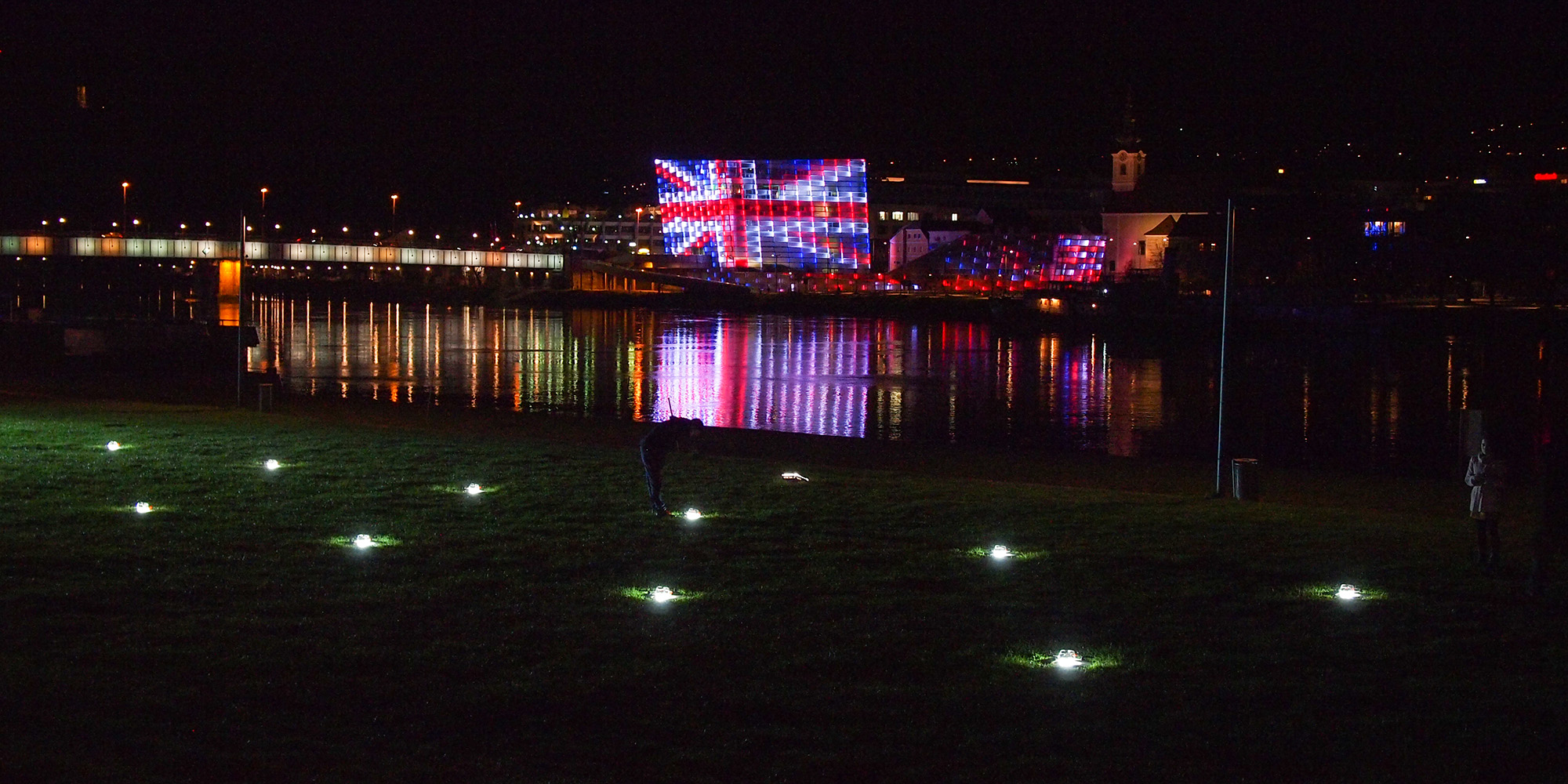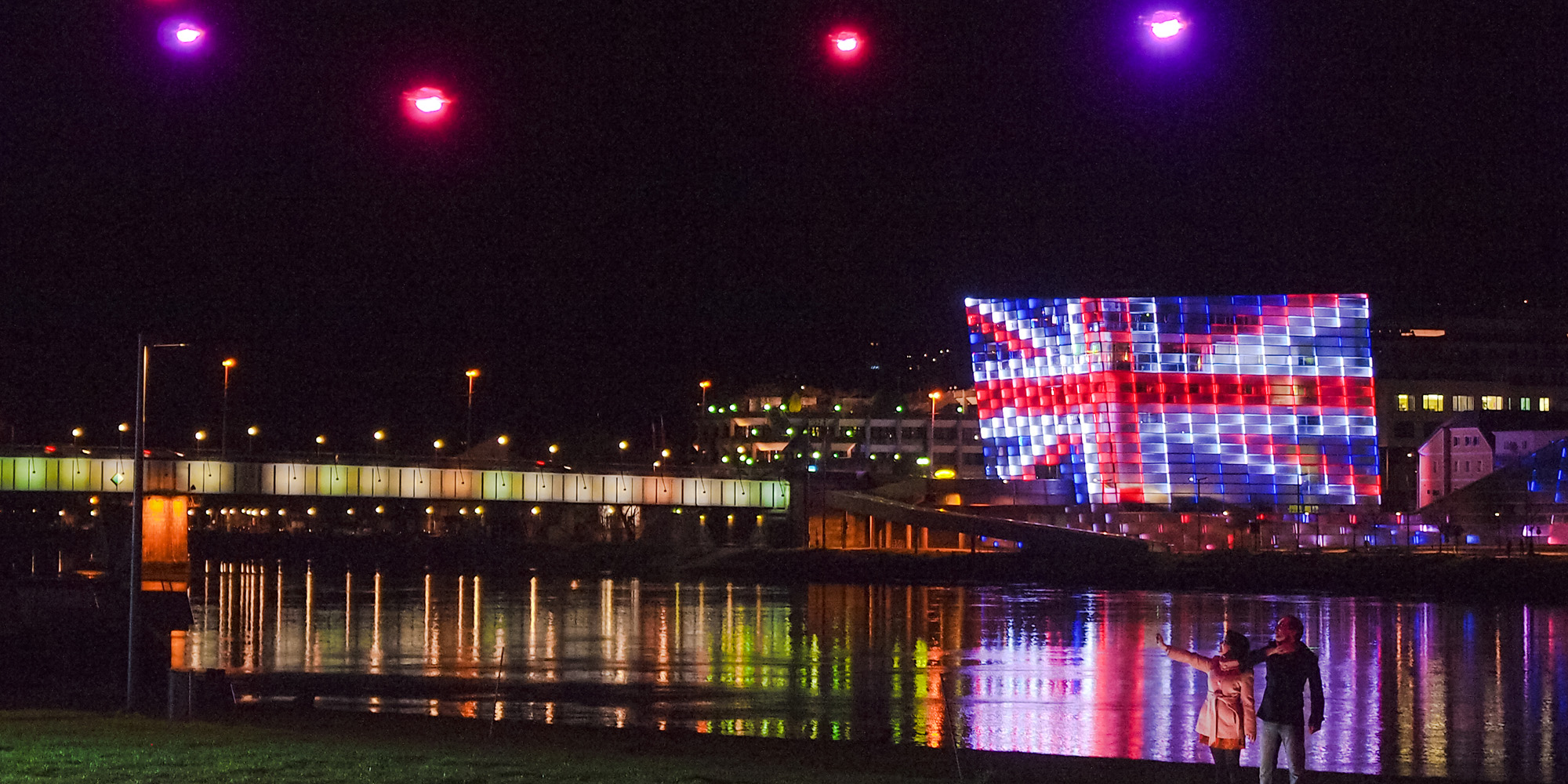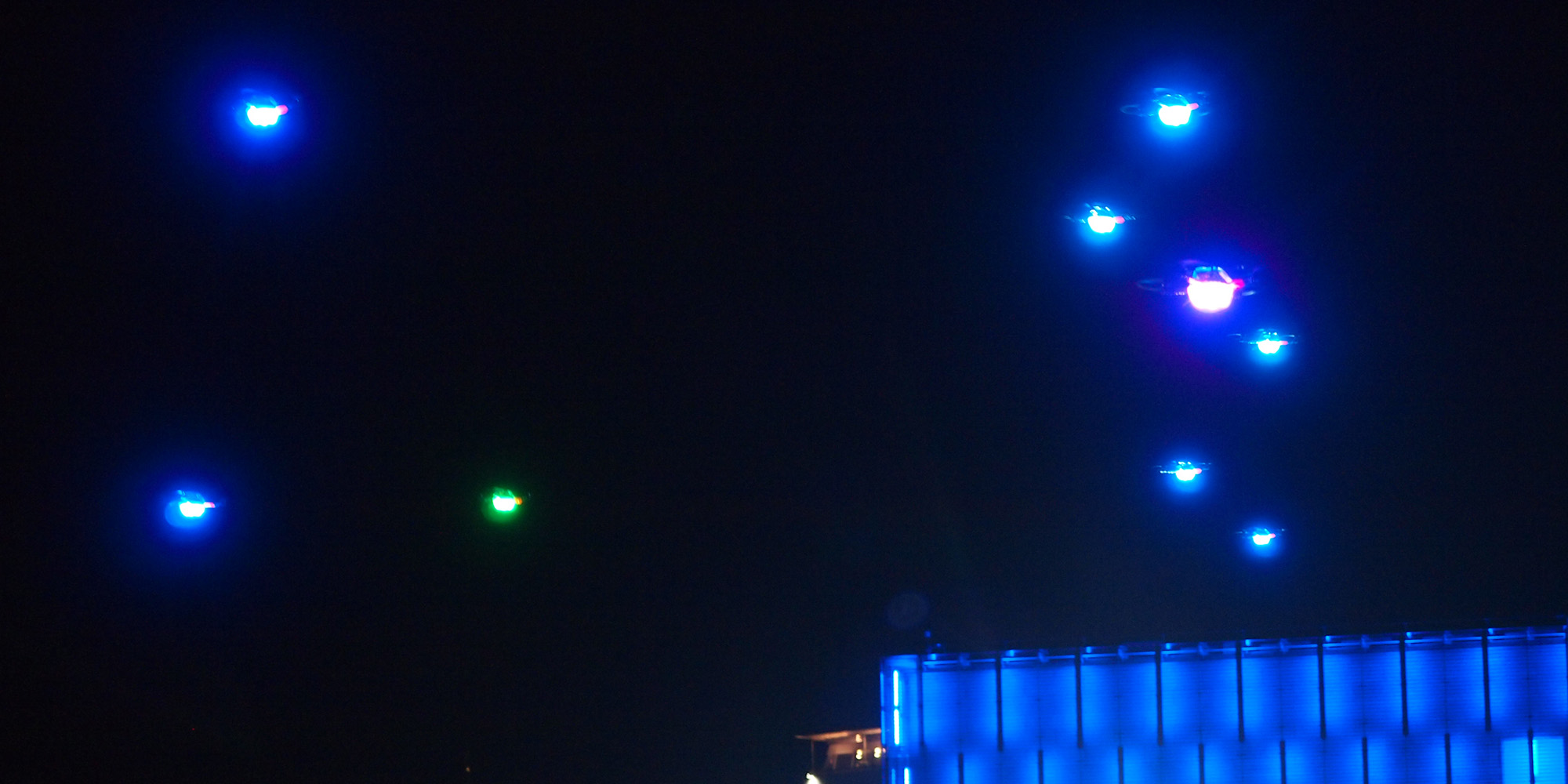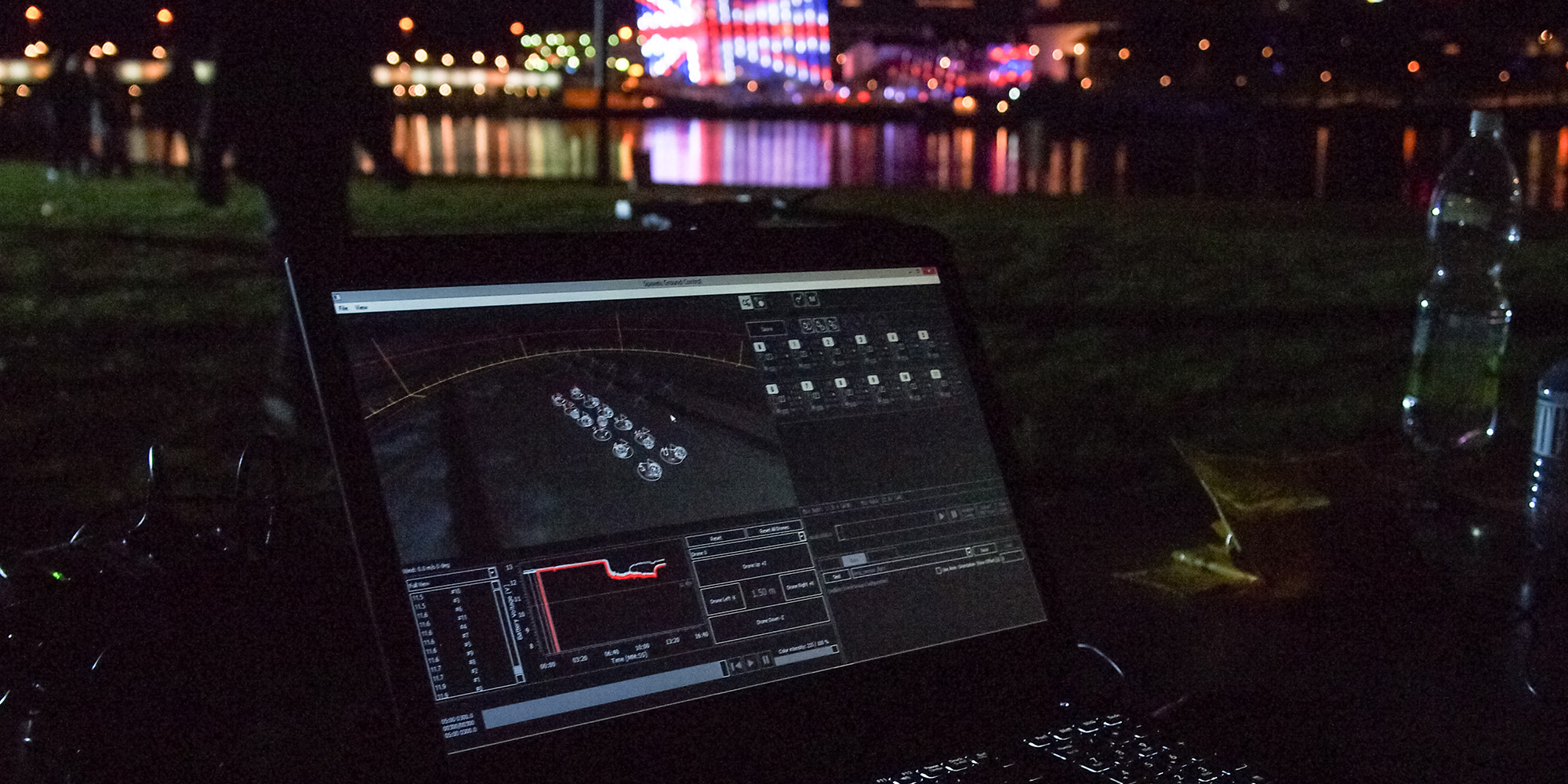Photos and Text: Martin Hieslmair, Translation: Mel Greenwald / Deutsche Version
This is a don’t-miss occasion! Now that Conchita Wurst’s “Rise Like a Phoenix” has brought the Eurovision Song Contest back to Austria after a 48 year hiatus, this country obviously wants to put its best foot forward staging the 2015 production. So it didn’t take long until the ORF – Austrian Broadcasting Company began receiving the first concepts for this year’s Postcards, the video clips that introduce each live performance by presenting the contestant and his/her homeland in the form of impressive images screened before an audience of millions of enthusiastic viewers.
Gebhardt Productions GmbH, a film production company headquartered in Mödling near Vienna, got the nod with their concept of cinematic bridge-building, an allusion to “Building Bridges,” the theme of the 2015 Eurovision Song Contest. In each short film, a surprise package is delivered to every participating artist: an invitation to immerse themselves in an extraordinary event in Austria. To shoot their Postcard, Electro Velvet Great Britain’s representative at the Song Contest this year, went on an excursion to Linz, where the duo encountered the blinking Spaxels of the Ars Electronica Futurelab. But let’s start this story from the beginning …
.
April 13, 2015, 2 PM. The weather isn’t cooperating at all with the Futurelab’s staffers. It’s a typical April day, the rain showers are intermittent. The film crew is still on its way to Upper Austria, but the tents are already set up in Donaupark in Linz on the spacious lawns in between the Lentos Art Museum and the Brucknerhaus concert hall with a lovely view across the Danube to the Ars Electronica Center.
The takeoff pads of the 12 Spaxels are in position on the lawn. Spaxels? They’re LED-equipped quadrocopters developed by the Ars Electronica Futurelab. As hovering points of light, a swarm of “space pixels” can draw three-dimensional objects, shapes and animated sequences in the night sky. Each individual pixel can shine in any conceivable color.
It’s still light out and there’s plenty of time to arrange the airfield and run the first test flights. The setup of the show calls for quite a bit of equipment that has to be in place before takeoff: The tents that serve as hangars for the individual Spaxels, their batteries and their ground crew; radio antennas to directly pilot the quadrocopters; and, of course, the pads they take off from.
And barriers have to be set up to cordon off an area in which, for security reasons, no one’s permitted in when the Spaxels are aloft above them. Plus, security precautions—a Geo-Fence, for instance—have been programmed into the Spaxels themselves.
A break in the rain, a patch of blue means a window of opportunity. The Spaxels can finally be moved into position for liftoff. The time for individual tests has arrived. Is communications with each Spaxel functioning? Do all colors appear? What about the quality of the GPS signal on site? Is there any interference from the surrounding area? And are the Spaxels correctly registering their precise altitude at the moment?
The weather continues to improve. A very positive development; after all, the Spaxels go up only when no precipitation’s coming down, and when the wind is considerably less than storm-strength. On the other hand, it doesn’t really matter how cold it is (like the sub-zero temps that time in Umea, Sweden) or if conditions are pretty sandy, which was definitely the case during the superlative celebration in Dubai (have a look at a special report from UAE).
In fact, this is the most exciting aspect of what is, actually, an R&D project. This sort of “display” is absolutely unprecedented, and the Futurelab crew learns something new at every appearance. And you never know—local facts & circumstances necessitate small on-site adjustments sometimes.
The tests are going well. Now, the drones can fly not only individually but in small groups too. Once a test is completed, each unit can either land at the spot assigned to it in the form of GPS coordinates, or a member of the ground crew catches them just before they touch down. That works quite nicely too as long as there are only a few of them aloft.
The April weather forces the crew to take another short break. All the Spaxels are brought to safety in their hangar but they’re back on the runway after a few minutes. Each Spaxel not only has a number; it has its own name too. And there’s also a bench full of subs ready to get in the game in case one of the starters isn’t up to the task on a particular day.
The individual tests have been completed. Next item on the agenda is the day’s first swarm flight. 12 Spaxels take off simultaneously.
12 Spaxels aren’t really much of a challenge anymore. In most shows, there are more. In their public debut at the 2012 voestalpine Klangwolke, no fewer than 49 Spaxels lit up the night sky above Linz in a gigantic outdoor formation flight the likes of which no one had ever seen before.
Horst Hörtner, senior director of the Ars Electronica Futurelab and inventor of the Spaxels, had the idea for these hovering points of light. His inspiration was derived from nature: the fireflies that had fascinated him as a little boy.
As far as prospects for the near future are concerned—it probably won’t be long until this type of aircraft can be miniaturized even further and be performing its airborne artistry in even larger choreographed squadrons.
But let’s get back to shooting the film for the 2015 Eurovision Song Contest. While the final tests are being run, over on the north bank of the Danube, Bianca Nicholas and Alex Larke have arrived at the Ars Electronica Center. The two singers who make up the duo Electro Velvet are representing Great Britain in the Eurovision Song Contest with their song Still in Love with You.
With the brilliantly lit façade of the Ars Electronica Center in the background, the film crew first captures the presentation of the package. Its contents: a very special magic wand. Horst Hörtner greets our British guests and accompanies them to the Spaxels’ airfield.
Gebhardt Productions about the concept behind their film shoot:
“Each year, the Eurovision Song Contest’s lead-in Postcards offer the respective host country an opportunity to present that land and its inhabitants to the Song Contest’s approximately 200 million viewers. This year, Gebhardt Productions was commissioned to produce the Austrian Postcards, and it was clear right from the start that we especially wanted to showcase the modern, innovative side of Austria. So, we absolutely had to get Ars Electronica involved in this.”
Back across the bridge on the Danube’s south bank—the Spaxels are ready for takeoff; the film crew has arrived in Donaupark; the City of Linz in all its glory!
The Ars Electronica Center, the Museum of the Future, is showing off its firepower too. As night falls, the media façade studded with 38,500 LED bulbs comes to life. The bold image selected to accompany this evening’s film shoot on the Center’s 5,100-m2 outer shell is a Union Jack, the national flag of the United Kingdom.
“The British duo, Electro Velvet, were totally blown away by the use of the Futurelab’s Spaxels and their choreography, and were delighted to have had the opportunity to get acquainted with this facet of Austria. Although rain and high winds had been forecast for the day of the shoot, the weather had a pleasant surprise in store for us, and the Spaxels had no problem demonstrating their brilliantly illuminated airborne artistry,” said Gebhardt Productions.
The shooting schedule now calls for close-ups of Bianca, Alex and Horst. In the meantime, it’s gotten so dark that the illuminated Spaxels really pack an aesthetic punch.
The rain has called it a day, so the outdoor air show can go on as planned. In fact, there’s also an indoor variant of the Spaxels’ performance—one that dispenses with GPS since, of course, there’s no direct contact with GPS satellites in an interior space.
Visitors to last year’s Ars Electronica Festival got a close-up look at how the Spaxels can maneuver in an interior airspace. The 2015 festival is set for September 3-7 in Linz, Spaxels shows included.
Last year, Futurelab staffers presented Smart Atoms, a new wrinkle in the indoor Spaxels concept in which the individual units seem to be magically interlinked. If one Spaxel is taken in hand or given a slight nudge, the other members of the small quadcopter swarm react accordingly.
Futurelab staffers have come up with lots of ways and situations in which the Spaxels can be utilized. For instance, Mercedes-Benz has been working together with the Ars Electronica Futurelab on gesture control for autonomous vehicles.
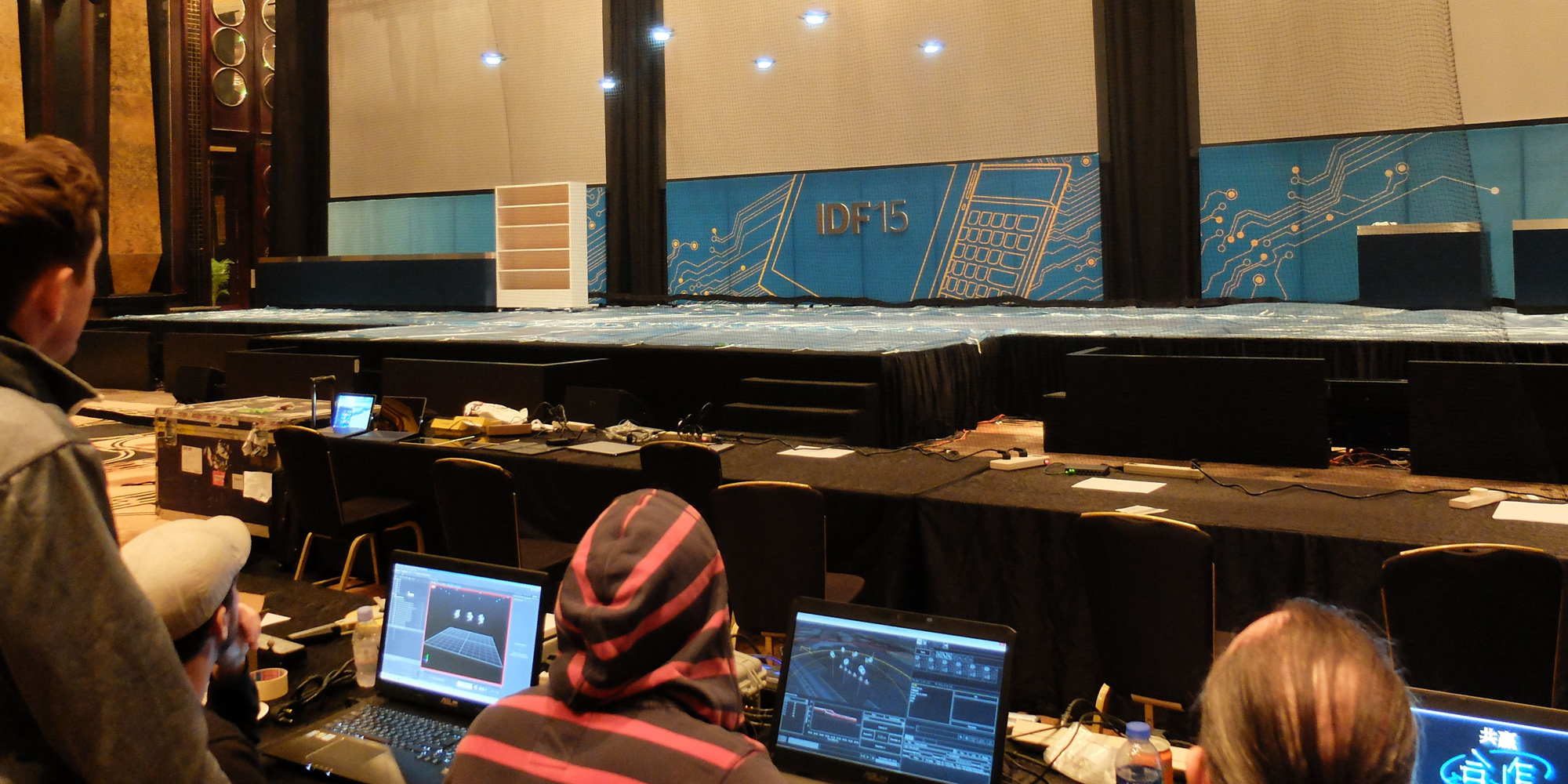
Or they can be featured in a surprise showstopper like the one recently staged at Intel Developer Forum 15 in Shenzhen, China, where the Spaxels provided the grand finale for the opening keynote by Intel CEO Brian Krzanich.
Back in Austria, the Spaxels’ rotors are in motion and the 12 points of light ascend. Several animation sequences were programmed in, and they’re now presented to the film crew for the first time.
Theoretically, it would even be possible to use them for light painting. In fact, the Spaxels even tried that out once–and, as a matter of fact, at this same location. The use of the time-exposure technique produced magnificent light-objects.
By the way: the quadrocopters themselves—not including the control technology and the LED module—are manufactured by a German company named Ascending Technologies. The Ars Electronica Futurelab opted for their Hummingbird model.
https://www.youtube.com/watch?v=HBTWl-DtKdM
The first big wave of worldwide media buzz came in the wake of the Spaxels’ appearance in London in 2013, when Paramount Pictures booked the illuminated swarm of space pixels to conjure up the Star Trek logo in the night sky near the Tower Bridge to promote their film “Star Trek Into Darkness.”
Linz, April 2015. The evening has activated night mode and the final sequences of the Postcard for the Eurovision Song Contest are a wrap!
The swarm lifted off several times at the director’s command. While the quadcopters were being equipped with freshly-charged batteries, the movie camera was repositioned.
Director Daniel Lwowski about the shooting:
“Filming with the mini drones of the Ars Electronica Futurelab, the so-called Spaxels, was really exciting. It’s amazing what the researchers and artists of Ars Electronica can do with this drone swarm. I was particularly fascinated by the combination of research and technology with art. With the Spaxels you are able to create ‘pictures’ that you have never seen before. Like the ‘ball-ballet’ at the ESC hall in Vienna, but with a component of freedom. “
The magic wand is removed from the packet. Like two orchestra conductors, Electro Velvet has the Spaxels dancing in midair and blinking in a giddy array of colors.
Several onlookers have gathered along the Danube to take in the spectacle from close up. As is the case with every formation flight, the audience’s perspective is decisive, since three-dimensional figures look different depending on the observer’s point of view.
A few final sequences are shot and then it’s time to call it a day: land the Spaxels, round up everything, pack the equipment and take down the tents. The next shows are already lined up.
And who knows where the Spaxels will be popping up after that, and which venues will be added to the list that includes Linz, London, Bergen, Ljubljana, Brisbane, Umea, Sharjah, Berlin, Hannover, Dubai, Las Vegas and Shenzhen. Let’s wait and see!
Additional information about the Ars Electronica Futurelab’s crew, the story of the Spaxels and their shows, and some of the technical details are available online at ars.electronica.art/spaxels. An insider’s look at a Spaxels performance is provided by this account from Dubai. And you can browse through the collection detailing our Spaxels adventure on the Ars Electronica Blog.
